Tell ‘em you saw it on RoadTraveler.net!
Copyright J. Langan/RoadTraveler. All Rights Reserved
Resource:
Gaither Tool: gaithertool.com
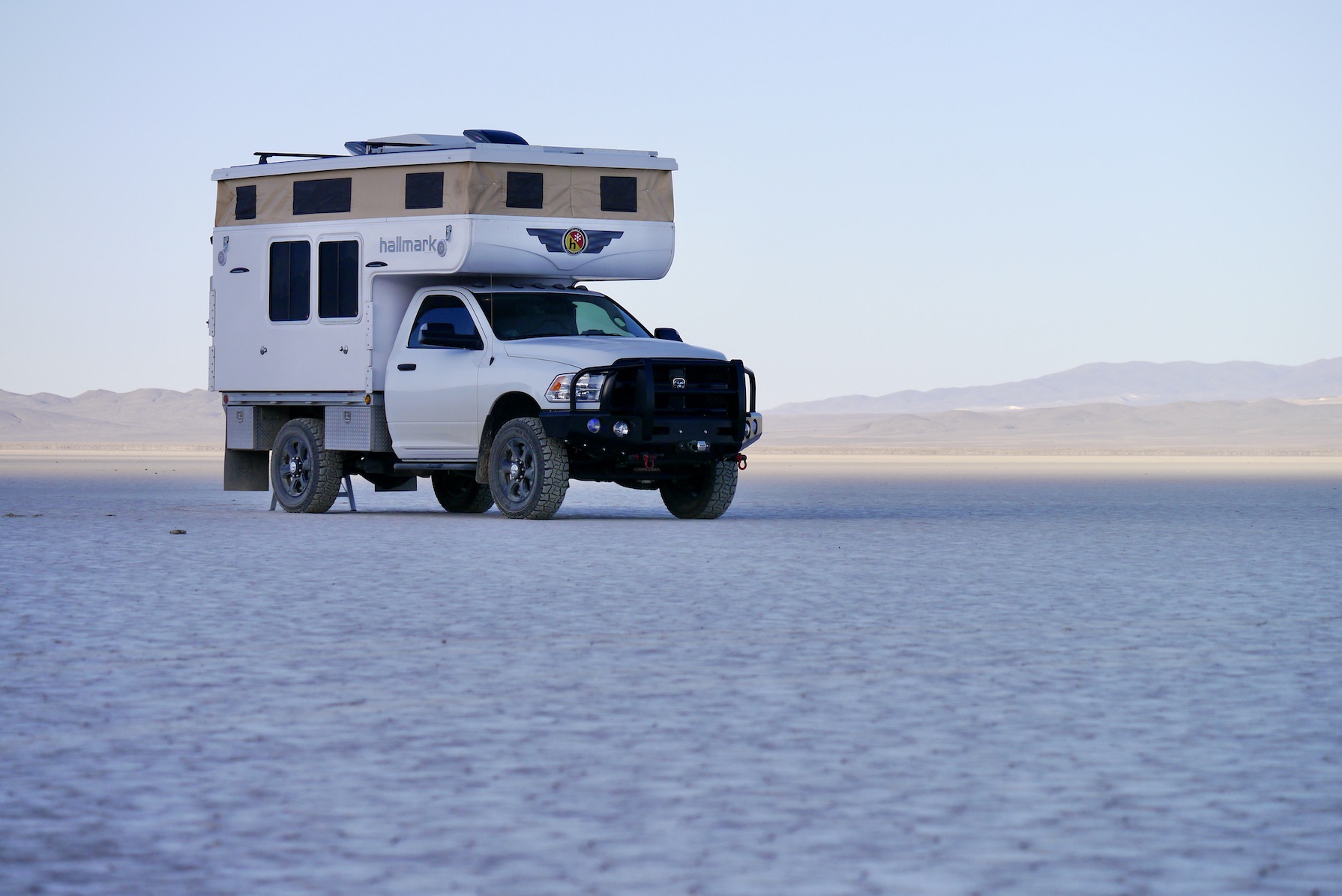
Trucks, Tech, Reviews, ADV Travel
Tell ‘em you saw it on RoadTraveler.net!
Copyright J. Langan/RoadTraveler. All Rights Reserved
Resource:
Gaither Tool: gaithertool.com
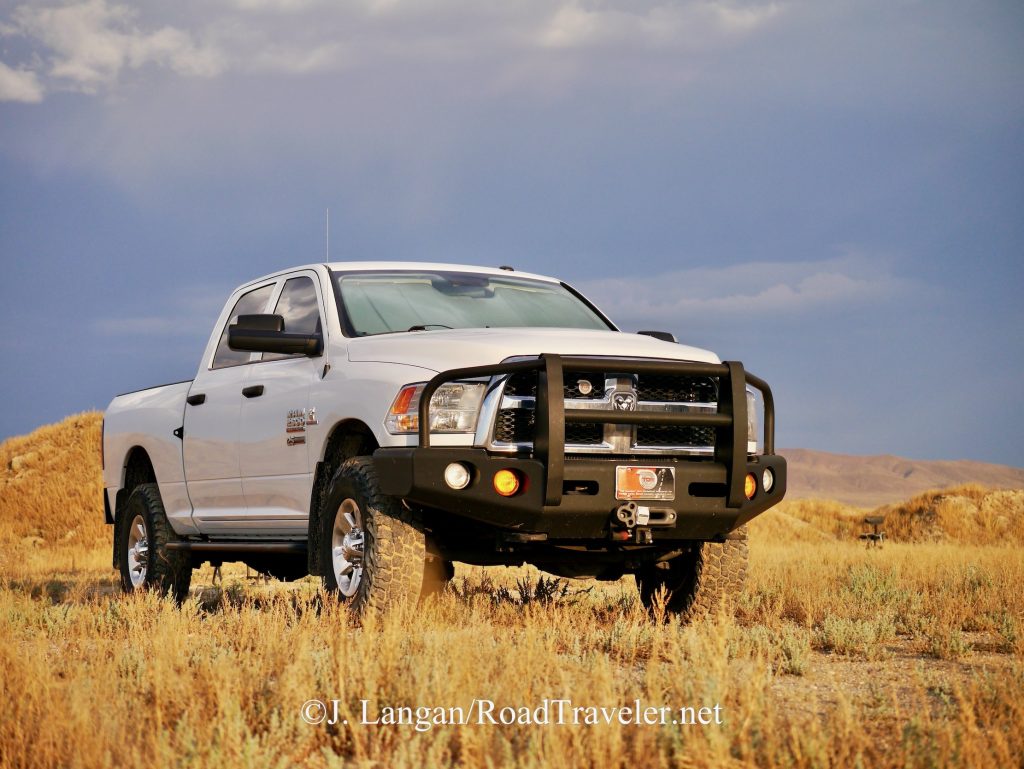
Mickey Thompson Baja Boss A/T LT255/85R17
The Baja Boss A/T was introduced to automotive journalists during the virtual 2020 SEMA Show with a press embargo date of April 5, 2021. After the embargo Mickey Thompson sent me a set for a long-term evaluation, which was published in the Turbo Diesel Register magazine. For my initial review I chose a popular 18-inch size aiming for the broadest appeal for those with newer trucks. In that piece I shared that Mickey Thompson introduced a new niche size, the LT255/85R17, that I also wanted to evaluate.
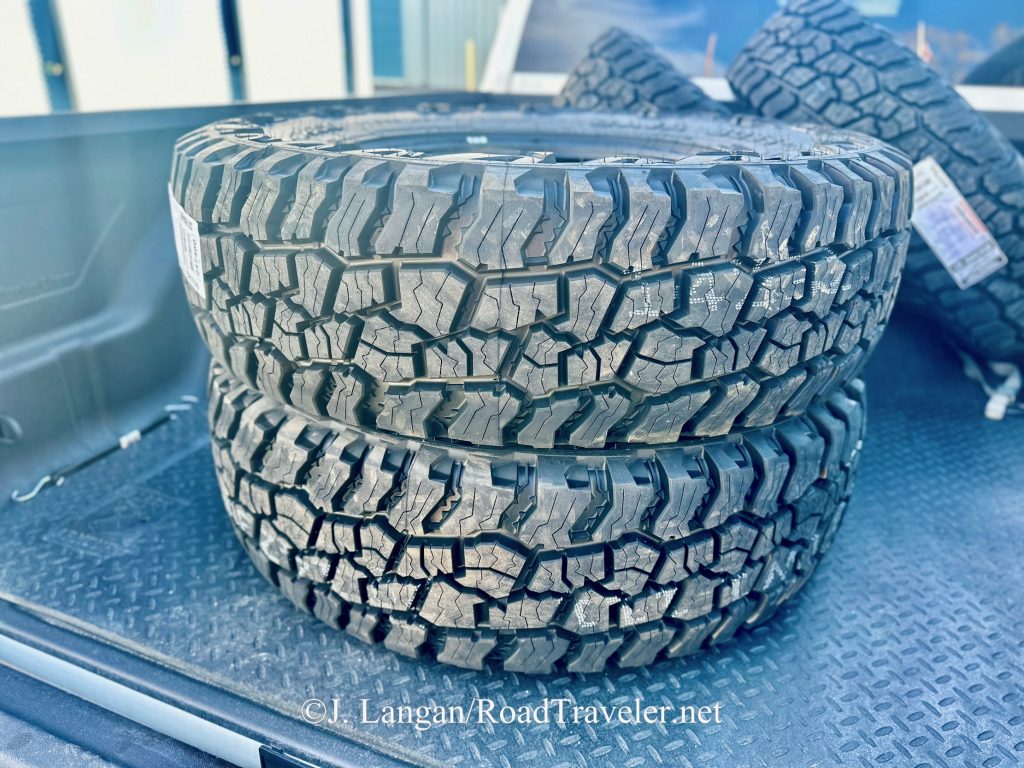
Overview
The Baja Boss A/T is a fairly high-void, four-rib tread design that Mickey Thompson calls a hybrid, AKA a commercial traction or an aggressive all-terrain. Absorbed by sister brand Mickey Thompson a few years ago, the legendary but now defunct Dick Cepek company arguably invented the first hybrid tread in 1978, when Mr. Dick Cepek introduced the first Fun Country. This was long before anyone used the word hybrid to describe tires, and before several other manufacturers started emulating these versatile and multifaceted designs.
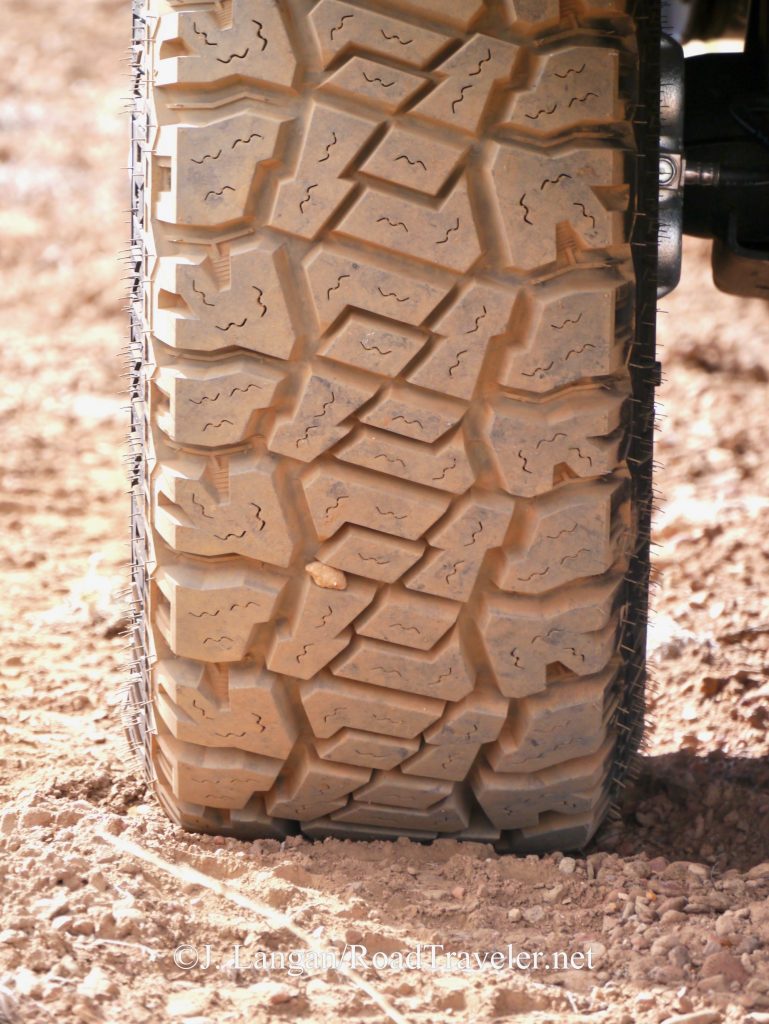
When compared to a more conservative all-terrain or all-season, the deeper and higher-void tread offers better resistance to hydroplaning and superior grip on deeper snow and moderate mud. These attributes are often combined with rugged carcass construction, and if the right special sauce is used for the tread compound sometimes they also offer superior longevity.
Continually reducing road noise while improving other benefits of traction designs is a challenge for engineers. Historically there’s been no easy solution, because better traction in sloppy conditions requires bigger blocks and voids, which increases road noise. The Baja Boss A/T is quieter than it looks.
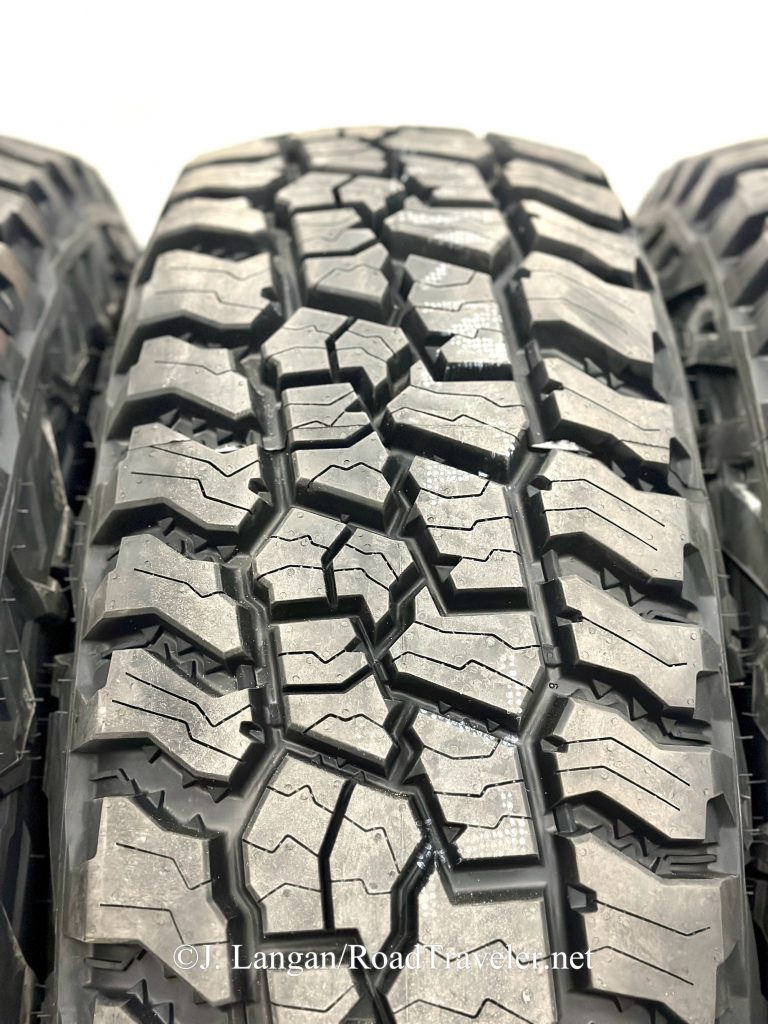
According To Mickey Thompson
Mickey Thompson says the Baja Boss A/T blends Extreme Sidebiters® for a bold look and serious grip with an all-new silica-reinforced compound providing long-wear, all-weather performance and cut/chip resistance.
Design highlights include:
That last bullet point is the specific size this review is about, the LT255/85R17 Baja Boss A/T (also know as the 35×10.00R17LT). The substantial siping helps achieve the severe winter rating and increases overall grip, and measures a whopping 17/32” of the total 18.5/32” depth. Calling the sidewall rubber Extreme Sidebiters® is not an exaggeration, as they are up to 14/32” thick!
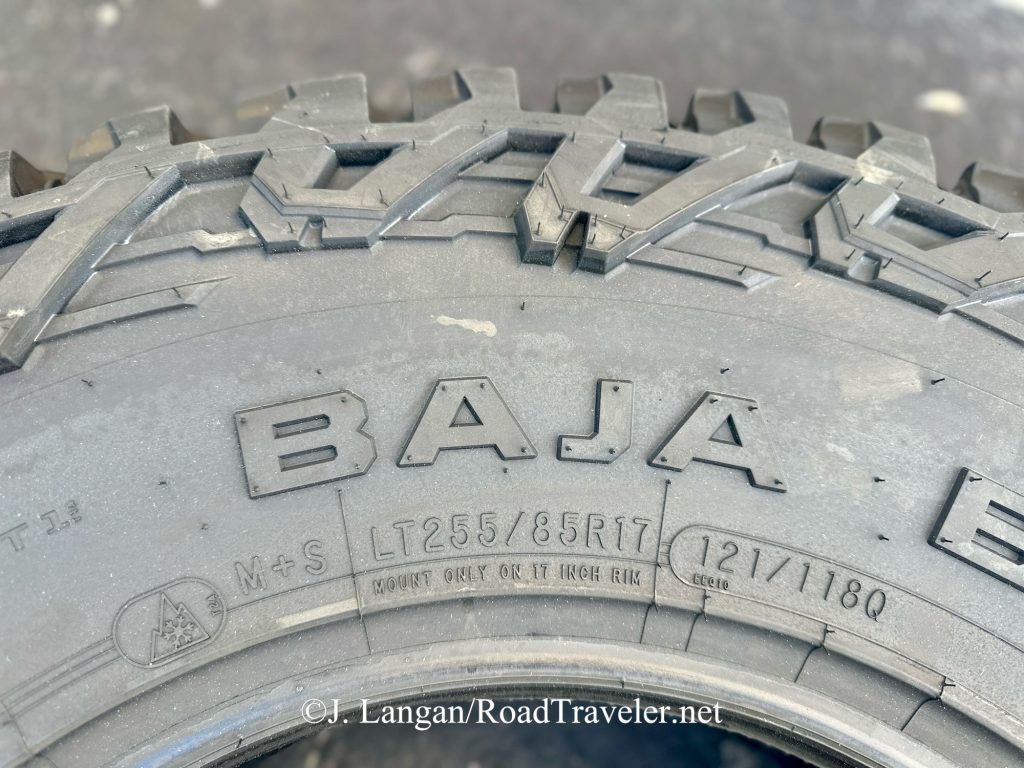
LT255/85R17 For Duallys
Dual Rear Wheel (DRW) pickups have an import role in the heavy-duty market, above the more common and very capable single rear wheel (SRW) HD trucks, but a notch below what are really medium-dutys, the 4500 and 5500 chassis. But the rear duals greatly restrict aftermarket tire options due to the spacing needed between sidewalls.
Unless someone wants to have their outside tires protruding well beyond the fenders (some do, and they think it looks cool), the DRW crowd has few choices for taller rubber that will fit otherwise stock or lightly-modified trucks. Mickey Thompson invented the new LT255/85R17 size to fill this niche. It is 35-inch-tall (34.6”), and was purposely designed to fit narrow 6.5-inch dually wheels, though it works well on wheels up to eight inches wide for SRW pickups.
When inflated to 80 psi, the 121 load-index supports 3,195 pounds each in SRW applications, or 2,910 pounds for duals. The tread has one nylon, two steel, and three polyester plies, the sidewall construction has three polyester plies, and they are made in the U.S.A.
Single Rear Wheel Use
Narrower tires will almost always clear more easily with fewer and sometimes zero modifications than a wider tire of the same height. What is also routinely overlooked because many are focused on looks, and wider is perceived as tougher and better, is that a narrower footprint usually rolls down the road more consistently, catching fewer edges, rain grooves, or semi-truck ruts. There are some people that still prefer the appearance and performance of moderate width tires (few modern LT tires are actually narrow or small), and avoid negative-offset wheels or grossly wide rubber sticking well beyond the fenders, which sling rain, snow, mud and other debris.
So it was not surprising to hear Senior Project Manager, Light Truck Division at Mickey Thompson, Ben Anderson, say that the Baja Boss A/T in LT255/85R17 has become popular with the Jeep and Toyota crowd, and others wanting taller but not needlessly wide off-road meats for their four-wheel-drives. I’m also one of those folks.

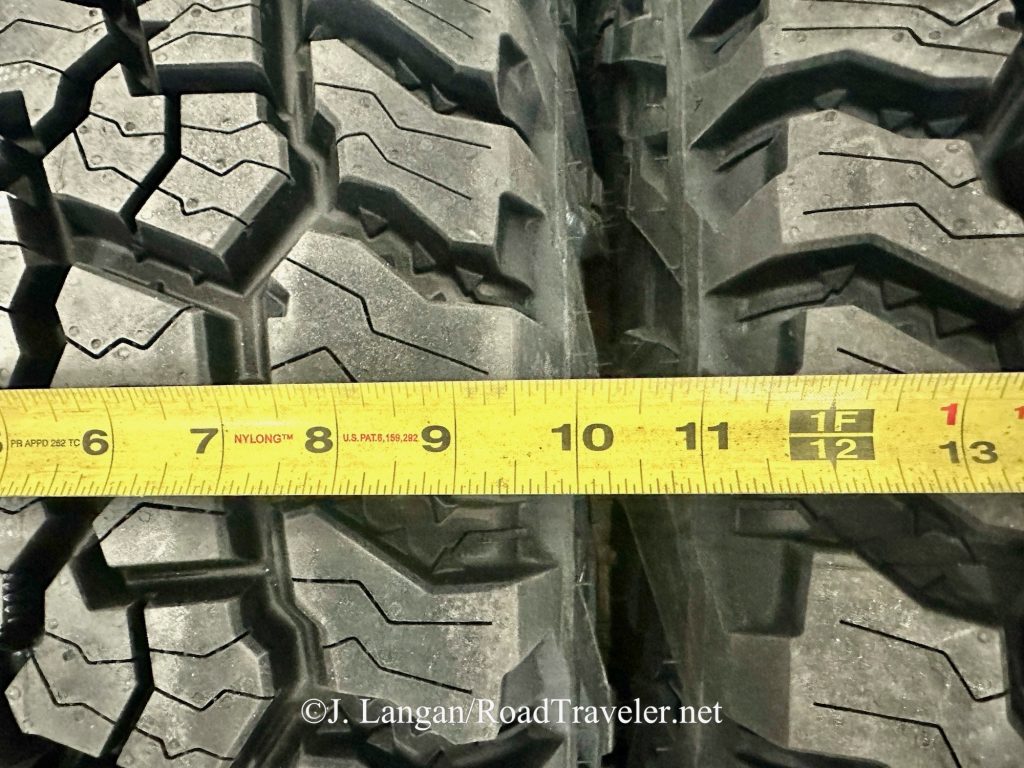
Sidebar
17-inch Tires Limited to 3,195 Pounds
Why are most heavy-duty seventeens rated to support much less weight than a similar 18-inch, or even less than the same 17-inch size was in the past? Nearly all new 17-inch light-truck tires are limited to a maximum capacity of 3,195 pounds regardless of their size, psi, or theoretical capabilities.
It appears that several years ago the Tire and Rim Association (TRA) decided to lower the maximum load index for seventeens. Or maybe there was a government regulation necessitating the change? Whatever the reason, it is difficult to find high-capacity 17-inch rubber.
The official TRA load inflation charts indicate that something doesn’t compute. For example, the LT295/70R17E has 3,195 pounds of capacity when inflated to 65 psi. However, increasing the pressure to the maximum allowable 80 psi offers no increase in capacity. My basic understanding of math and science tells me that this is not how pressure and volume works inside a tire. Plus there are exceptions to the 3,195 limit.
3,970 Pound 17-Inch Anomaly
I think that if a specific tire design and/or size existed before the change, that manufacturers were grandfathered. Specific examples can be seen online, including from Toyo in their Open Country M/T line. Still using LT295/70R17E, the Toyo M/T has a load index of 128, and is rated to support 3,970 pounds at 80 psi, which makes much more sense. That is a whopping 775 pounds more than 3,195, and 1,550 pounds or 3/4-ton per axle!
For a given diameter, smaller wheels yield taller sidewalls, generally flex more, and may generate extra heat. Excessive heat is the archenemy of tires, so I theorize that this was one reason to push folks to bigger rims.
Yet there are big 16-inch sizes rated above the 17-inch, 3,195 maximum. The LT305/75R16 is rated for 3,640 pounds at only 65 psi. What gives? Are you a tire engineer reading this article? If so and you want to share some industry knowledge and history, I’d love to hear from you.
Possible Solutions
Many newer pickups come with 18-inch or larger wheels and there are many sizes that offer excellent carrying capacity. However, there are plenty of older trucks still running around on their original 17-inch rims, and they might need more capacity when hauling big loads. Proceed at your own risk, you are your own warranty station, nobody is responsible but you, etc. Depending on the specific tire, size, and manufacturer, and how one applies the science, it is possible that you may already have, or could source a 17-inch tire with more capacity than 3,195 pounds.
Mount And Balance
The Baja Boss A/T tread is asymmetric and there is a dedicated inside and outside sidewall, so they should be mounted correctly. It is possible to have a tire and wheel that is balanced according to the machine, but drives poorly. One reason can be attaching excessive weight to achieve the balance, and road force is another. As discussed in a previous article, excessive road force, or radial force variation, is a condition that can affect steering, traction, braking and load support. High road force will impart ride disturbances to the chassis and ultimately the driver.
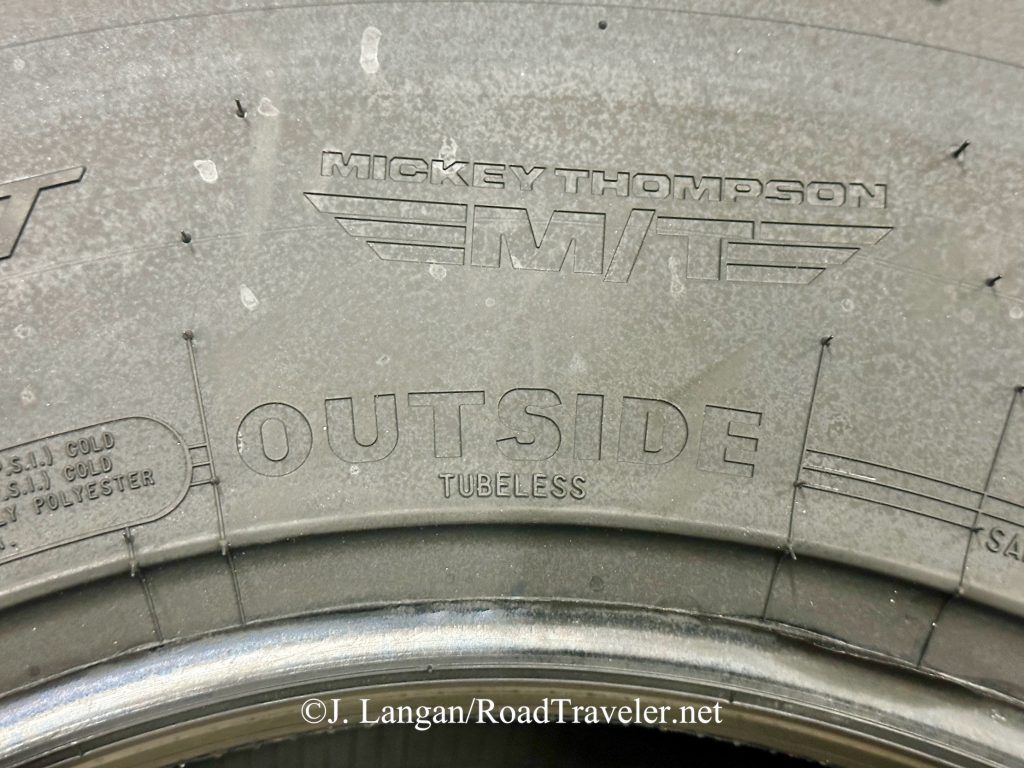
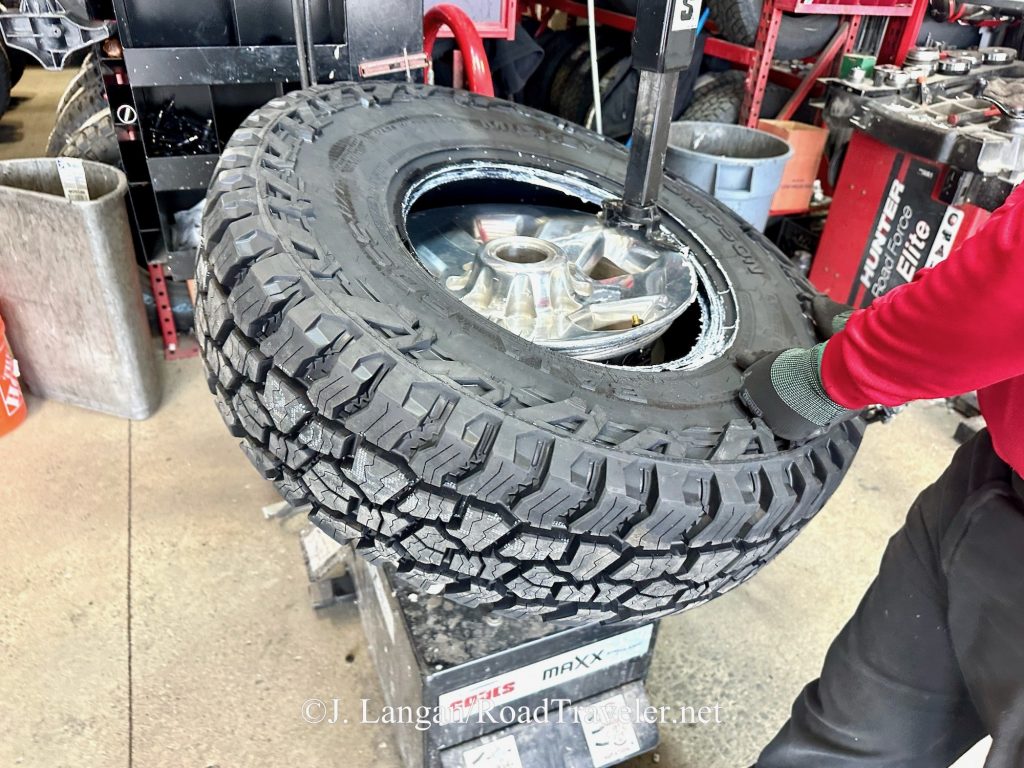
Both the wheel weight required and the road force measurements were extremely low for this set of Mickey Thompsons. An acceptable maximum road force measurement for passenger car tires is 35 pounds, but all of these Baja Boss A/Ts were in the teens, which is phenomenal for a stout light-truck tire weighing 64 pounds. They were mounted on 28-pound OEM Fourth Generation 17-inch Power Wagon wheels, and the average weight needed to balance the resulting 93-pounds was only 3.9-ounces!
#1- 4.5 oz., road force 17-lb
#2- 3.75 oz., road force 11-lb
#3- 4.00 oz., road force 14-lb
#4- 3.25 oz, road force 16-lb
Data is nice, but like with many things these days we must ensure that the machines are accurate and confirm for ourselves that everything is truly working well.
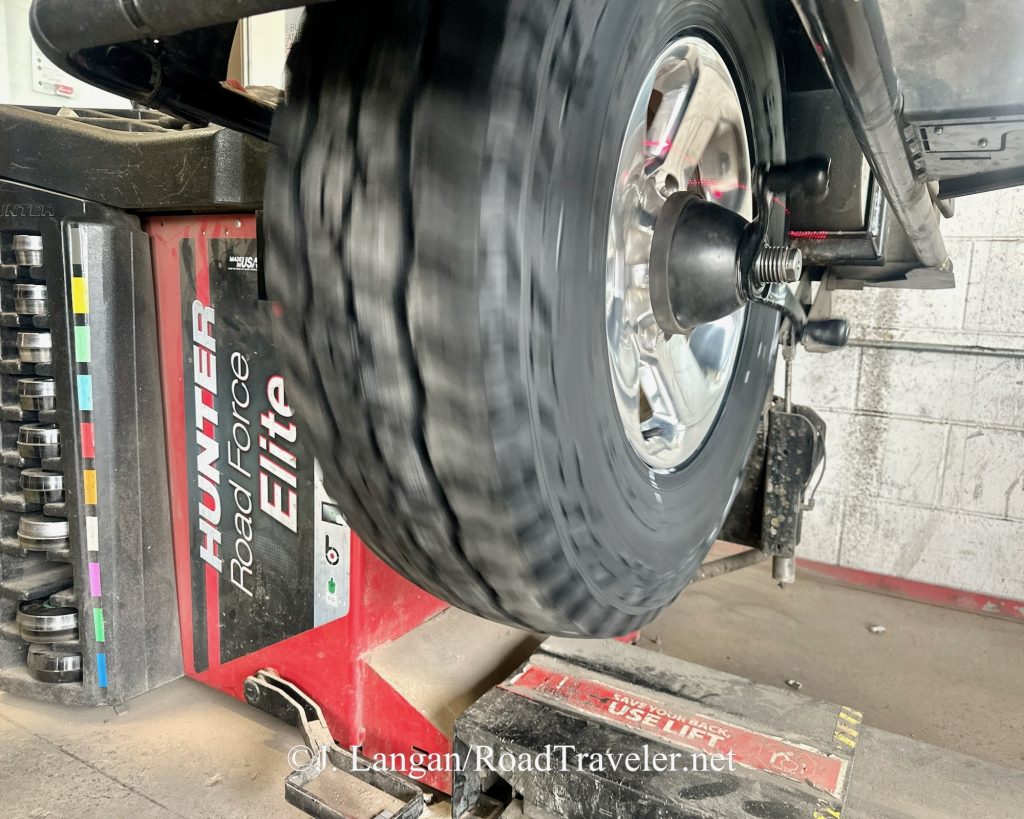
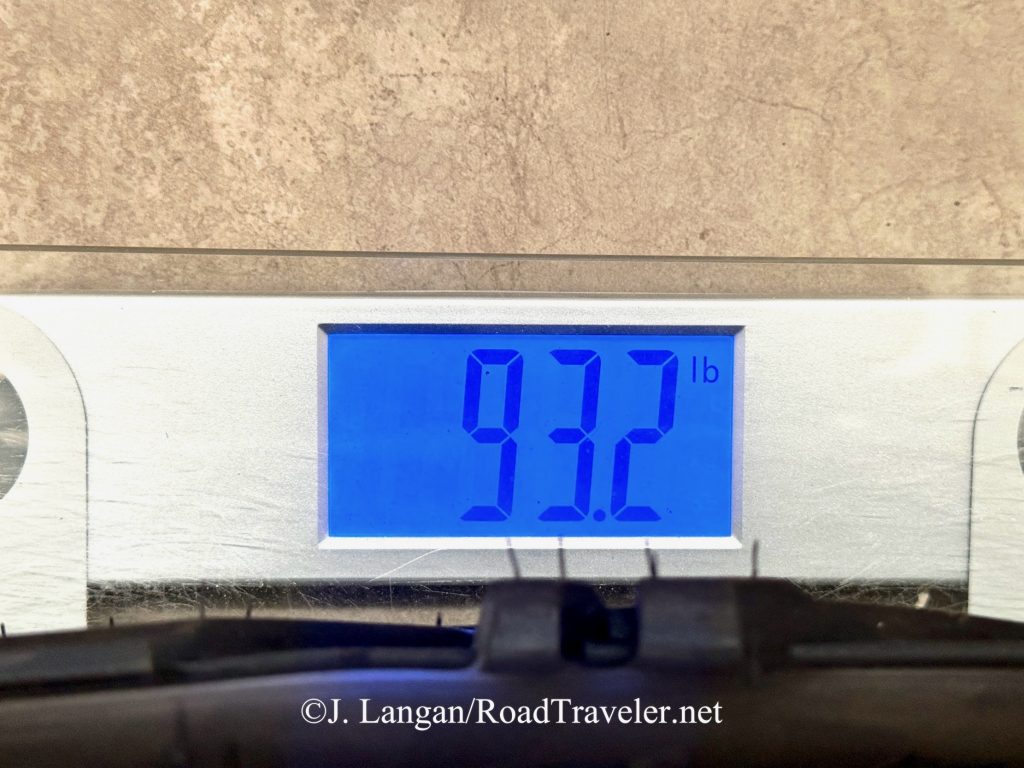
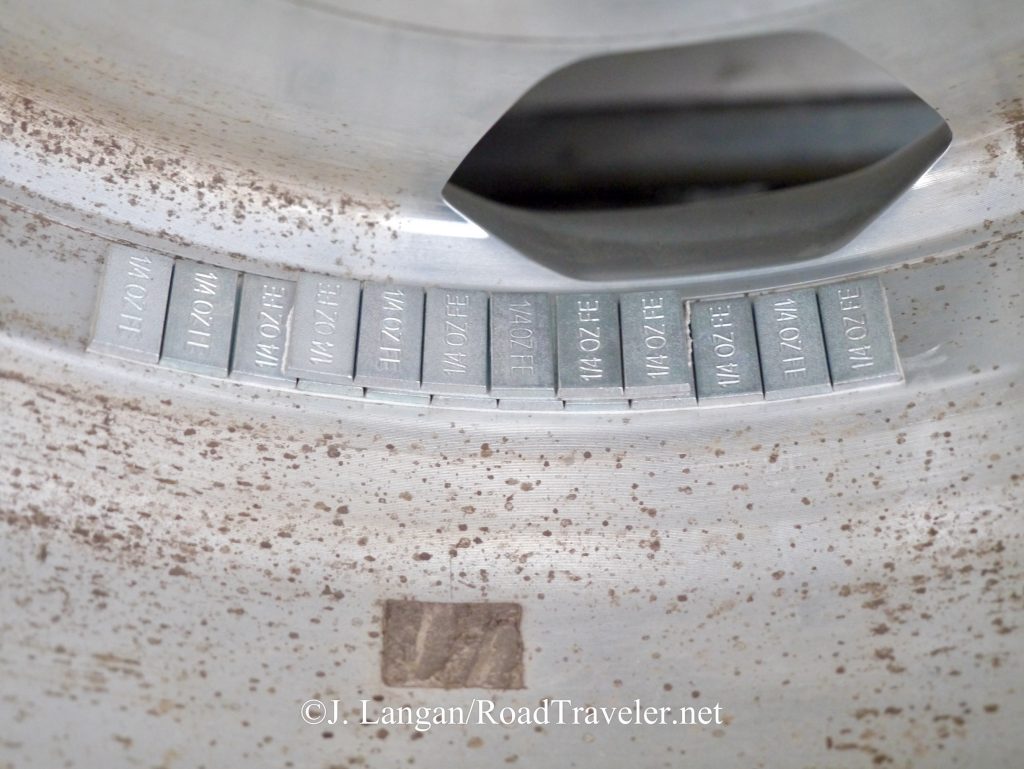
Take It To The Limit, One More Time
My initial seat-of-the-pants freeway evaluation confirmed that Discount Tire’s balance machine was calibrated. These 255/85R17 Baja Boss A/T were fantastically smooth all the way up to 100 miles per hours and straight line tracking was excellent. I was running 58 psi in the fronts, and 40 psi in the rears, plenty for my 2500’s everyday unloaded wet weight.
The Toyo C/T is a similar heavy-duty commercial traction design and one of my all-time favorites, and a set was removed to mount the Mickey Thompsons. While the C/T are not loud for their capabilities, the Baja Boss A/T are noticeably quieter.
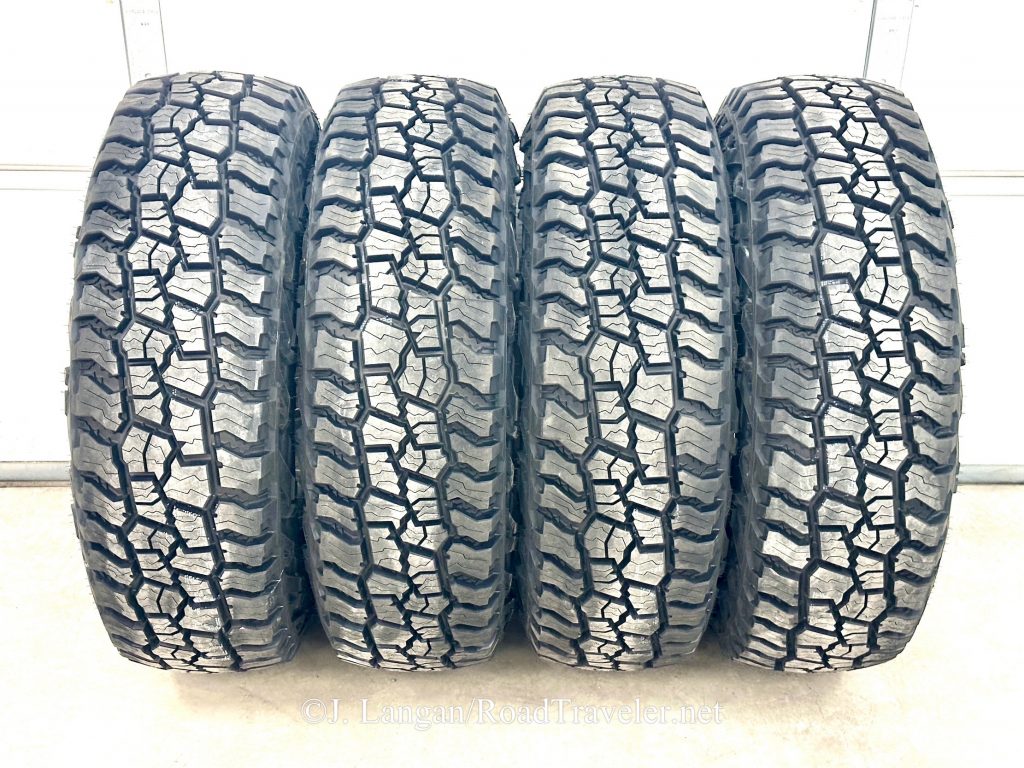
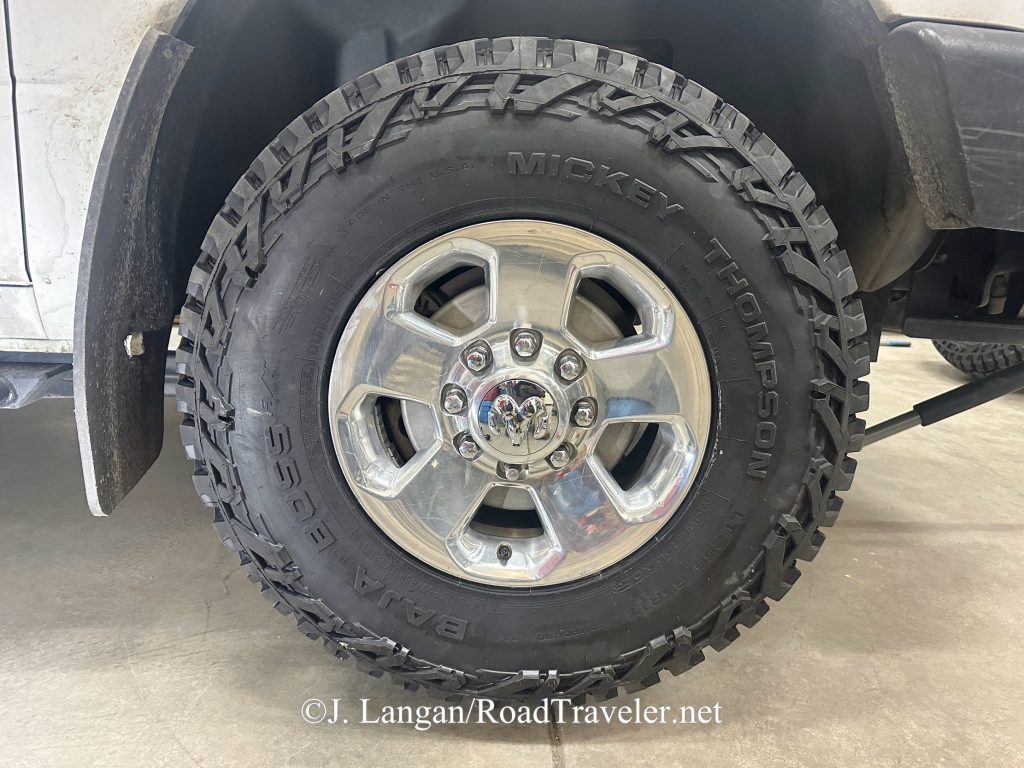
Not Loud
The lack of noise from the Baja Boss A/T for the amount of void and traction impressed me back in 2021. There are similar, older treads that I still like and have run extensively in multiple sizes on several four-wheel-drives, and the Cooper Discover S/T MAXX is a great example. The S/T MAXX is a little louder when new, but once they are worn the volume increases substantially, sometimes becoming nearly as loud as a mud-terrain. The Baja Boss A/T starts and remains quieter than others, and the engineers really deserve credit. Are they as quiet as a five-rib A/T or highway tread? Of course not. As with all tires, to help reduce noise and keep your rubber wearing evenly, frequent and consistent rotations are necessary.
Ride Quality
What constitutes a good or poor ride characteristic depends on one’s performance perspective. Some prefer a softer and more compliant on-road ride, while others want or need firmer and ostensibly stronger options. Even within the LT tire category there can be huge differences between tread designs and carcass construction, even when the load index and other ratings are identical. The Mickey Thompson Baja Boss A/T is sturdy, which I prefer when using my pickup for hauling, towing, and rugged off-pavement use. The PowerPly XD™ with its 50% heavier denier cord and biased-angle third sidewall ply can be felt, but that’s to be expected and is appropriate for the intended applications.
I do prefer a somewhat softer ride during normal daily driving, but this is easily accomplished with the following two practices. I don’t combine super tall wheels with short and silly thin sidewalls (which also reduces carrying capacity), and I run close to the minimum pressure required for the weight on each axle. This means I know what my vehicle weighs, find the appropriate psi using an inflation chart, and am diligent about adding air when the load is substantially increased.
How Low Can You Go?
When unloaded I routinely run my rears between 35 and 40 psi for comfort, traction, and overall performance. The fairly soft riding 2014-and-newer Ram 2500s are not nearly as rough as the older and stiffer suspensions, but it’s still suboptimal to have overinflated tires. The ride quality difference between 80 and 40 psi with no load on the rear axle is dramatic. Over-inflation hurts grip and uneven wear is also possible.
Depending on the exact size, load index 121 tires will have a capacity of about 1,950 pounds each, or 3,900 pounds per axle at 35 psi, more than many think. One can always increase pressure to tune for their speed, ride, and overall preferences. Tires get hotter in warm weather and at higher speeds, and overheated tires can and do separate. Increasing psi for certain conditions might be desirable, but that doesn’t mean jumping from 35 psi to 80 when there is only 3,500 pounds on the axle.
In the front I typically run between 50 and 60 psi depending on the ratings and weight. The Cummins Turbo Diesel is heavy, but front axle loads are less variable so pressure adjustments are rarely needed.
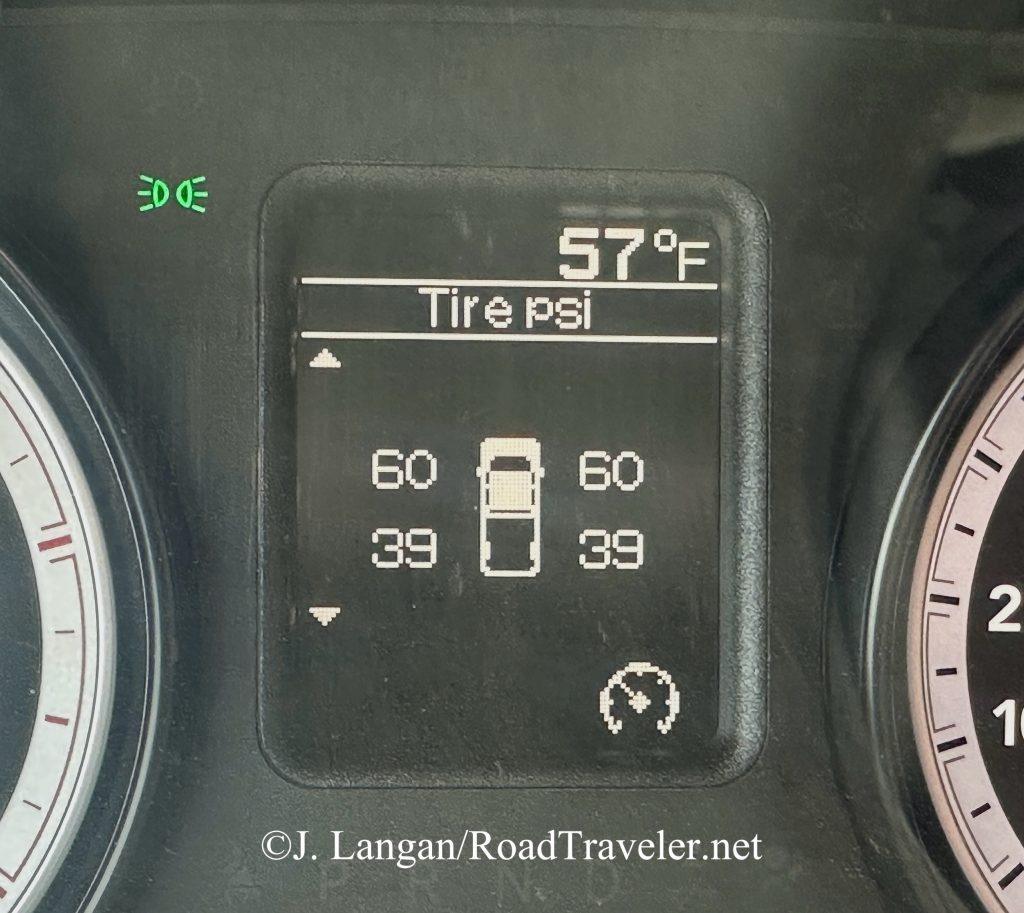
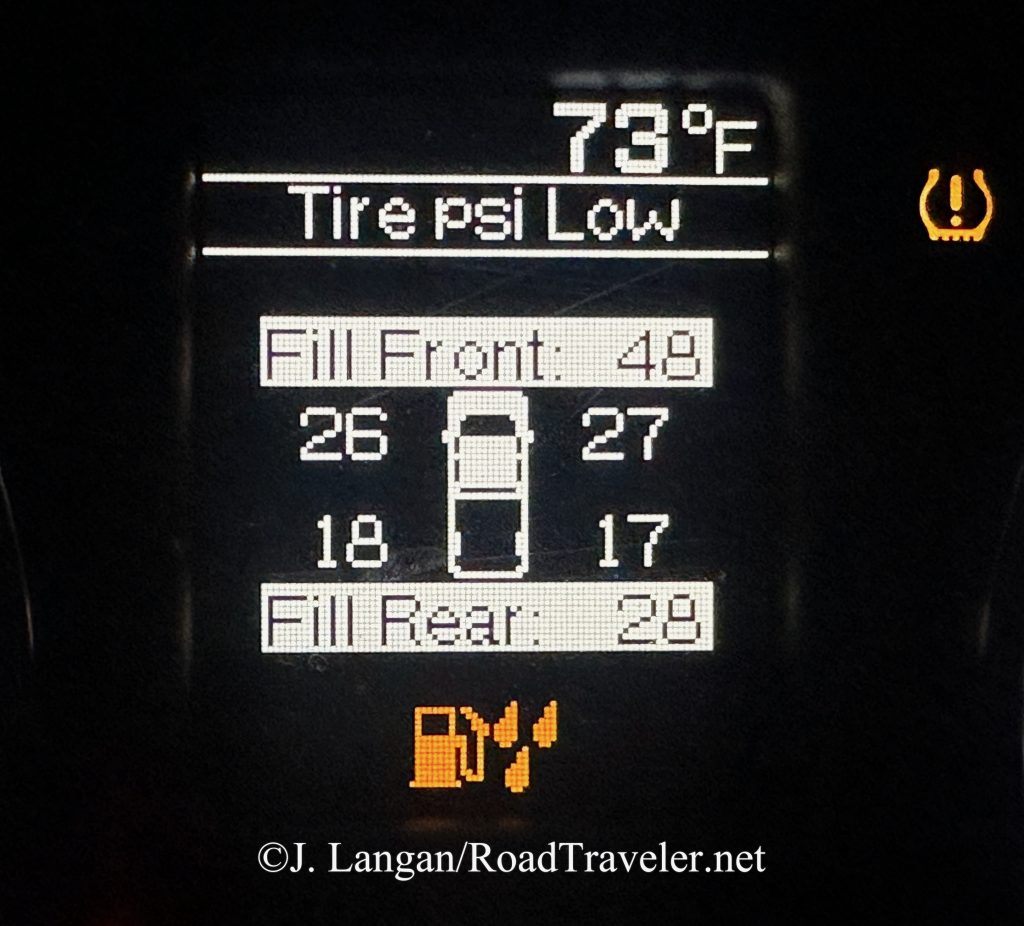
Light Load TPMS Light
The federally mandated Tire Pressure Monitoring System (TPMS) is an outgrowth of the Ford Explorer/Firestone debacle in the 1990s. It’s also symbolic of a larger problem, which is the unwillingness of the average driver to take responsibility for their machinery, including failing to check something as fundamentally important as tire pressure. Even with TPMS on my pickups, I regularly check and adjust pressures with a handheld gauge.
Having psi information available on the dash is great, but it’s unfortunate that Ram eliminated the light-load option around 2012, and require all 2500 owners to run pressures for maximum loads or accept a warning light on the dash. The 3500 Rams have a different system, the Tire Pressure Information System (TPIS), because their GVWR is over 10,000 pounds. TPIS provides information but does not force a warning light for running less than a predetermined and maximum pressure.
I permanently eliminated the TPMS irritant with a professional Autel MaxiSys MS906 tablet scan tool. One could argue that this was a $1,000 sledgehammer solution to dispatch an ant. True, but I purchased the Autel one year before the AlphaOBD diagnostic software was available, which reportedly works well for adjusting the pressure thresholds.
A professional automotive tablet is a super powerful diagnostic tool, and I have only used a small fraction of its capabilities. But the scanner has come in handy a few times by allowing me to discover the source of unusual problems or clear codes that were too much for my Edge CTS2.
Regardless of the tool being used, I absolutely love being able to adjust the minimum psi thresholds for both the front and rear axles to my liking, depending on the load index of the tires and my needs. My 2017 regular cab has a heavy Hallmark flatbed camper mounted full-time and the rear axle threshold’s are set higher, usually around 70 or 80 psi.
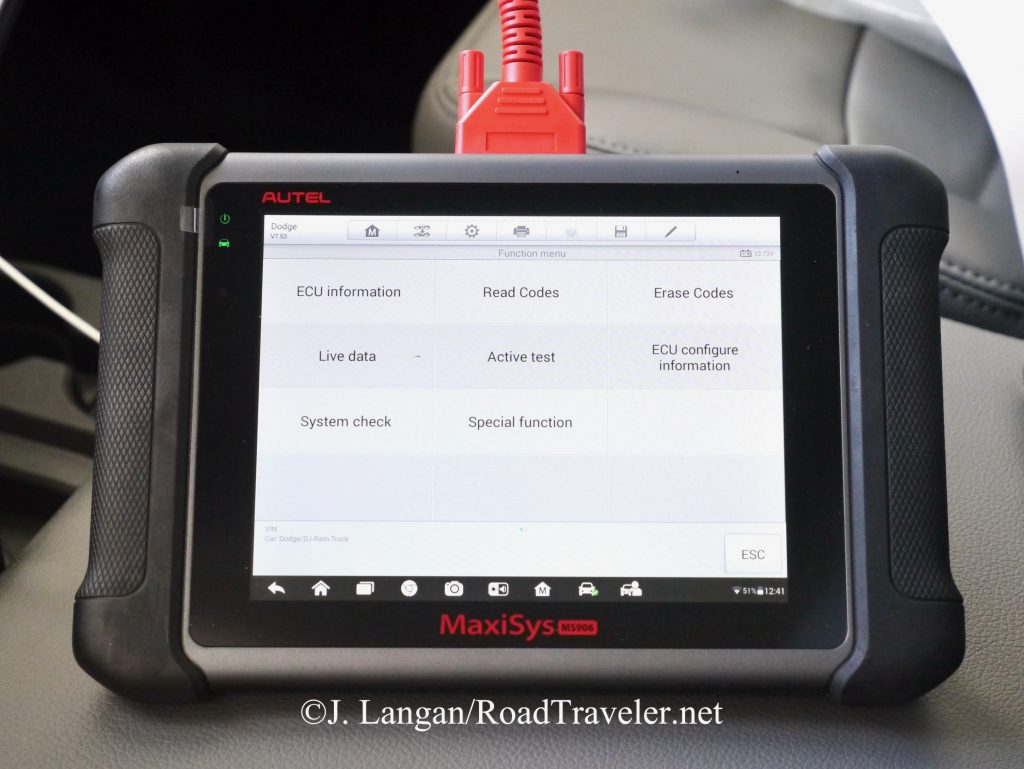
Need Traction?
Traction, handling, and overall performance from the Baja Boss A/T has been impressive in all conditions and on every surface, which has included considerable dirt, gravel, rock, rain, and snow. For those wanting hybrid or commercial traction rubber I don’t envision many people wanting more grip over varied terrain than these Mickey Thompsons provide. My first set of Baja Boss A/T saw less snow than I would have preferred, not taking advantage of the three peak mountain snowflake (3PMS) rating because our local Sierra Nevada winter storms and my travels rarely overlapped in 2021. The story is dramatically different with the second set.
Got Snow and Rain? Lots Of It?
The day after mounting these LT255/85R17 on my 2014 crew cab, I made a 500 mile weekend round trip that included two crossings of the Sierra Nevada’s infamous Donner Pass. There were several inches of wet snow for dozens of miles that required four-wheel-drive. Followed by 100 miles of epic rainfall. The kind of rain that even with the windshield wipers bouncing at full speed I could barely see the roadway, similar to dangerous fog conditions, and using four-wheel-drive was beneficial because of water on the road. Throughout the remainder of winter and spring 2024, the Baja Boss A/T performed perfectly during every winter storm.
Similar to mud, the types of snow and the related driving conditions can vary greatly by region or microclimate, and opinions regarding what is good performance in certain conditions are highly subjective. For my uses I have found that the Mickey Thompson Baja Boss A/T are an excellent winter and wet weather performer under my Ram 2500.
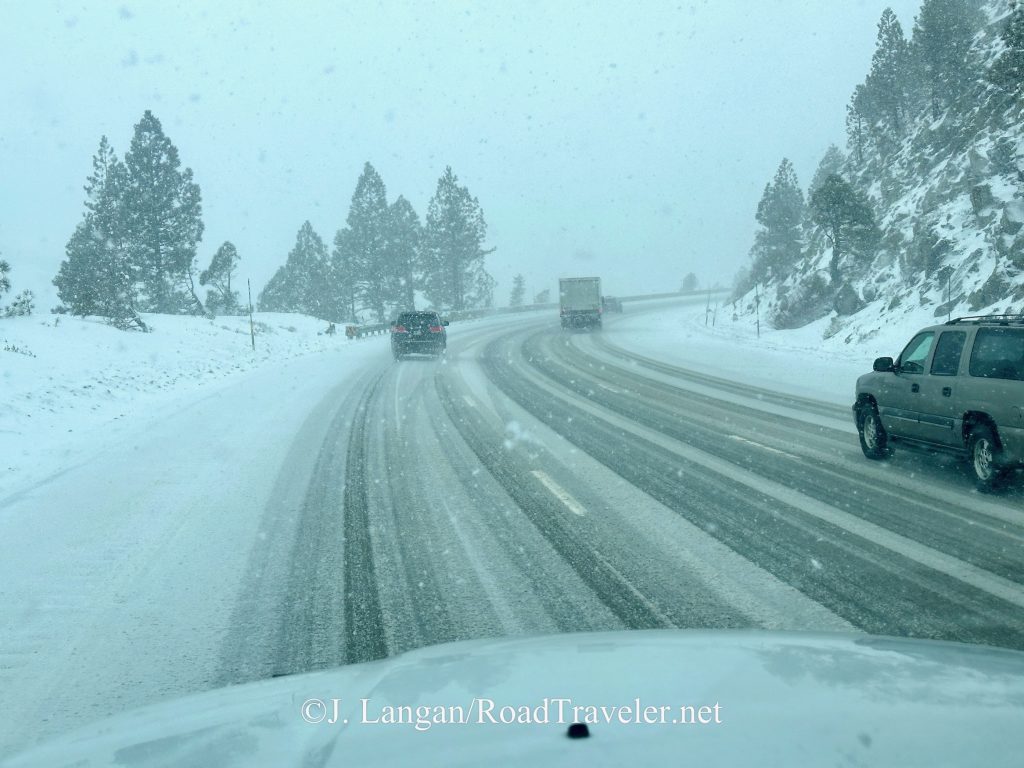
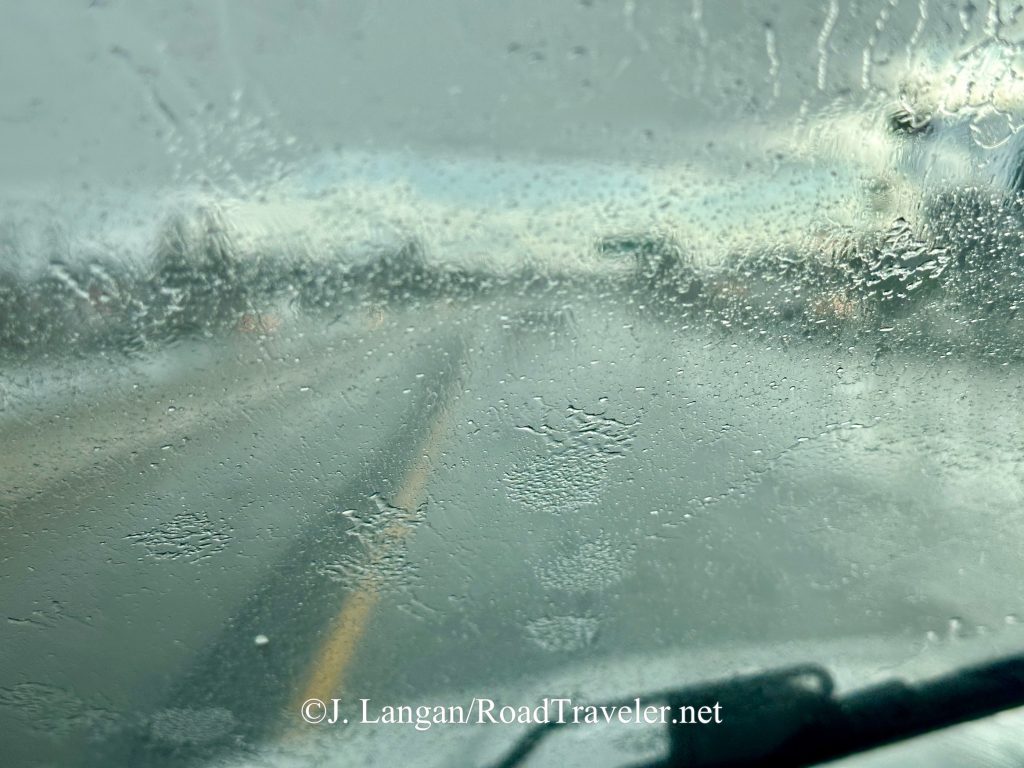
Sidebiters®
Sidewall tread has become popular in recent years, even on tires that are really not intended to be used in harsh off-pavement conditions because it looks cool. However, the Baja Boss A/T Extreme Sidebiters® are legit, and are super thick and beefy. I certainly like how they look, but also put them to work for their intended purpose. If you never leave the pavement, the Sidebiters® aren’t going to complain if you drag them along curbs.
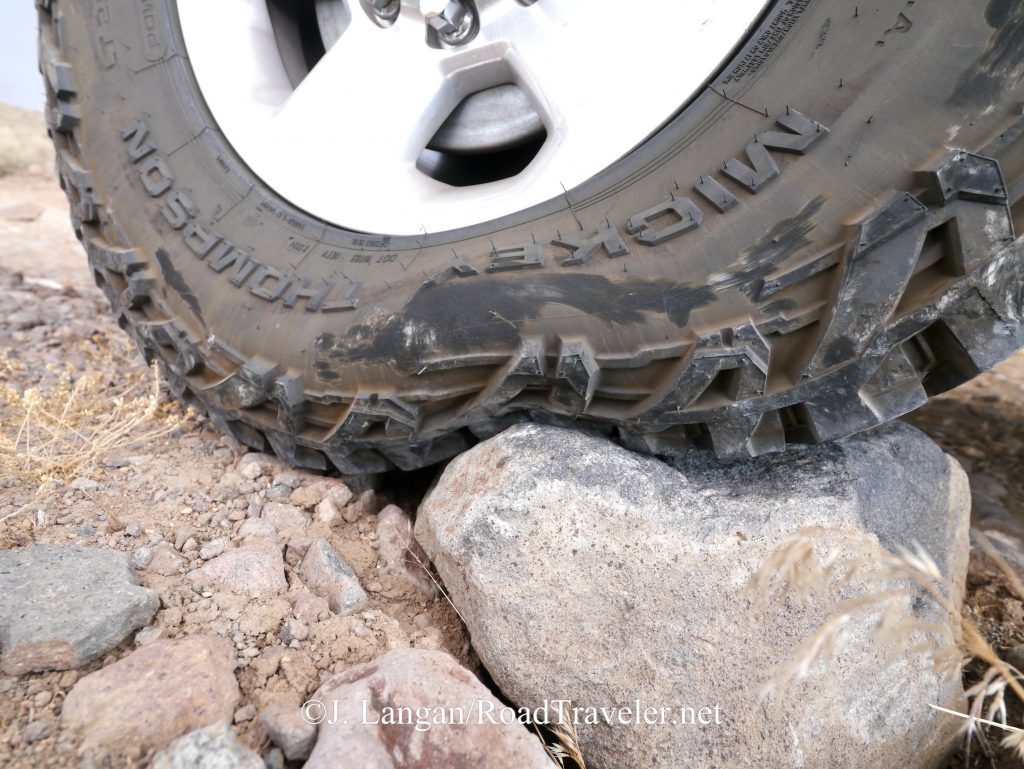
Estimated Longevity Baselines
Wear and longevity for a given tire can be highly variable depending on the vehicle, duty-cycle, and driver. One could argue that all three of these metrics (and others) are important, however, the person behind the wheel has a disproportionate effect, and will invariably influence results dramatically compared to the others.
If we were to take two identical pickups (model, gearing, transmission, tires, etc.), load them the same, and run them over a route with different drivers, it would not be surprising to see measurably different fuel economy. Covering longer distances and varied terrain would make the differences more obvious. More or less mpg is a direct result of how one operates the accelerator and brakes.
Tires and brakes are consumed more slowly than fuel, but over time the driver who gets fewer mpg and exercises less finesse and vehicle sympathy will likely also get fewer miles out of their rubber and brakes. The differences can be dramatic.
Same Guy Driving The Same Truck
No one’s truck, conditions, or driving style are identical, however, if the driver is not one of the variables the data can be more comparable. The treadwear information I’ve gathered from several four-wheel-drives over decades, particularly during the last 10 years driving the same 2014 Ram 2500 crew cab with a G56 6-speed manual transmission, provides relatively consistent and relevant information.
Wear Data
These LT255/85R17 Baja Boss A/T were mounted February 2024, have been rotated twice, and have logged 6,300 miles. Approximately 10% of those were off-pavement, including dozens at low trail pressures to improve ride, traction, and prevent damage. There is zero visible cutting, chipping or lug tearing of the tread, which is impressive considering the amount of off-highway use my truck sees. (Again, driving habits matter, and I keep tire slip and spinning to a minimum, particularly in the dirt.)
While I am smooth and conservative off-pavement, on the blacktop I routinely use all of the torque, horsepower, and rpm that my G56 version of the Cummins 6.7L has to offer with assertive application of the skinny pedal. Just like hard braking and turning fast can disproportionately wear the fronts, the massive twist of modern diesel engines can be hard on the rear drivers. Yet, that is not what I’ve experienced, there has been no penalty for my lead foot.
All Baja Boss A/T come with 18.5/32” of tread, and this set currently has about 15.5/32”, so they have given 2,100 miles per 1/32”. Those 2,100 miles compare well with other quality aftermarket traction designs, on the same truck, driven by me.
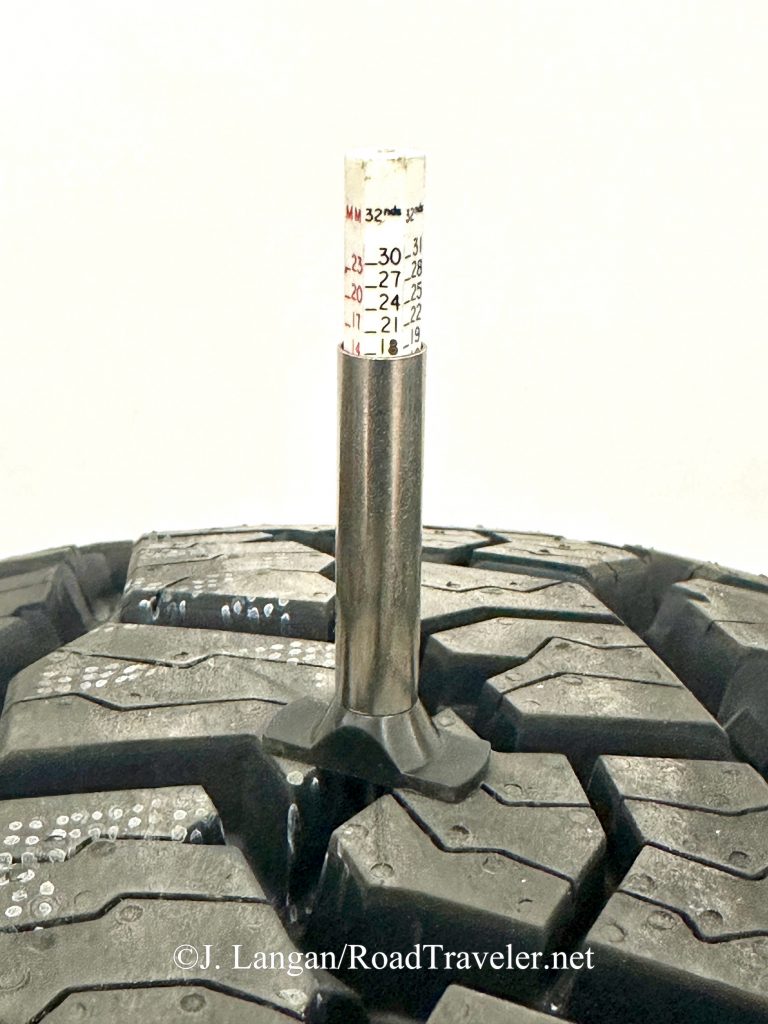
For comparison, my previous set of Baja Boss A/T in 295/70R18 were run for 15,000 miles and delivered 2,300 miles for each thirty-second before they started living on a friend’s 1991 W250 Turbo Diesel. If 2,100 miles per 1/32” remains constant, these 255/85R17 Baja Boss will last 36,800 miles before reaching the minimum legal depth of 2/32”.
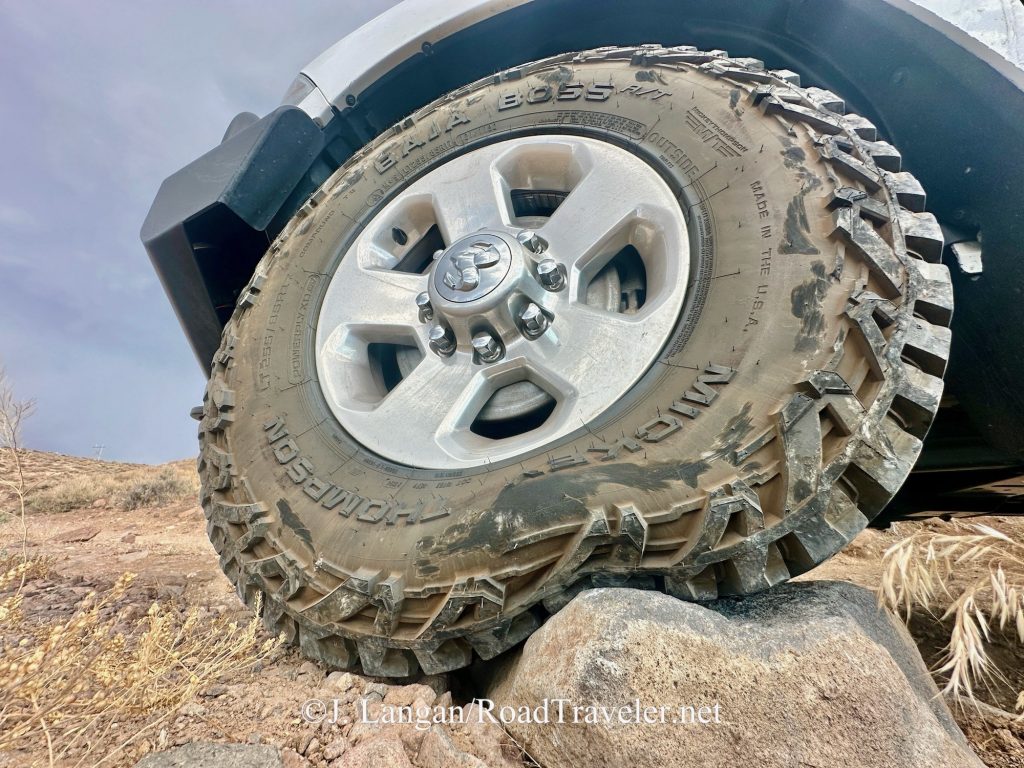
Still Love Them
After running two sets of Baja Boss A/T over the past few years I’m still enamored with this design from Mickey Thompson, and it might become my favorite hybrid all-terrain. They wear well, provide excellent traction and performance in all conditions, and are extremely rugged while still being quieter than competitors. Currently they are available in 74 sizes, for wheels from 15 to 24 inches. If you are in the market for a new set of tires you owe it to yourself to consider the Baja Boss A/T from Mickey Thompson.
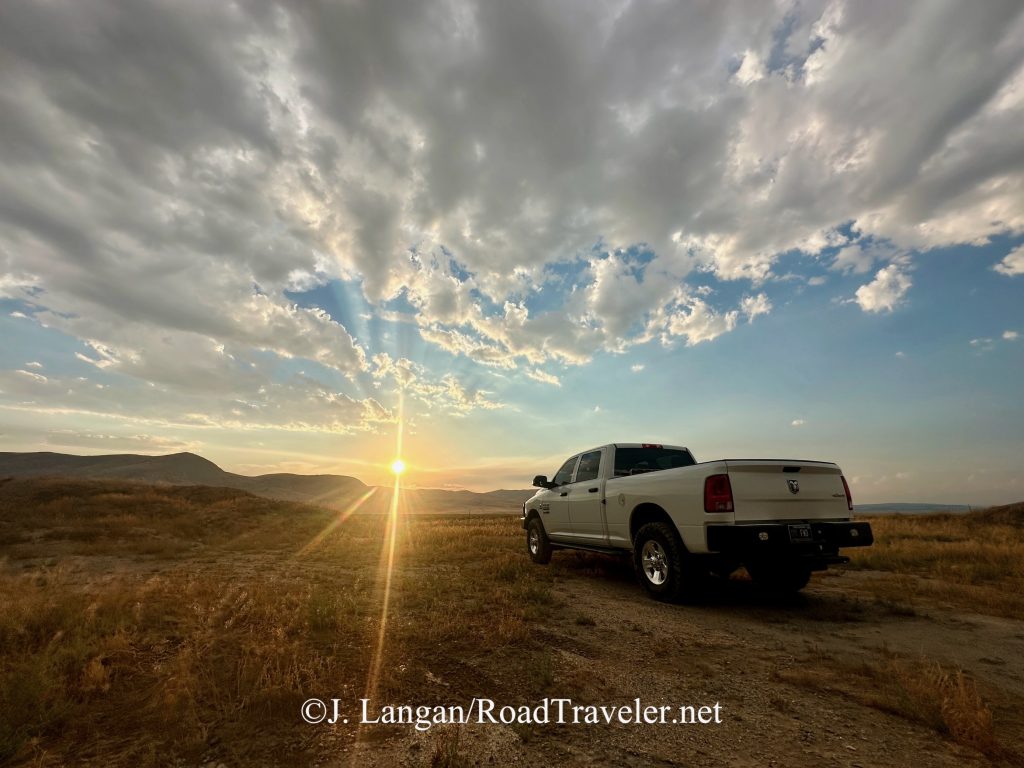
Tell ‘em you saw it on RoadTraveler.net!
Copyright J. Langan/RoadTraveler. All Rights Reserved
Resource:
Mickey Thompson Tires: mickeythompsontires.com
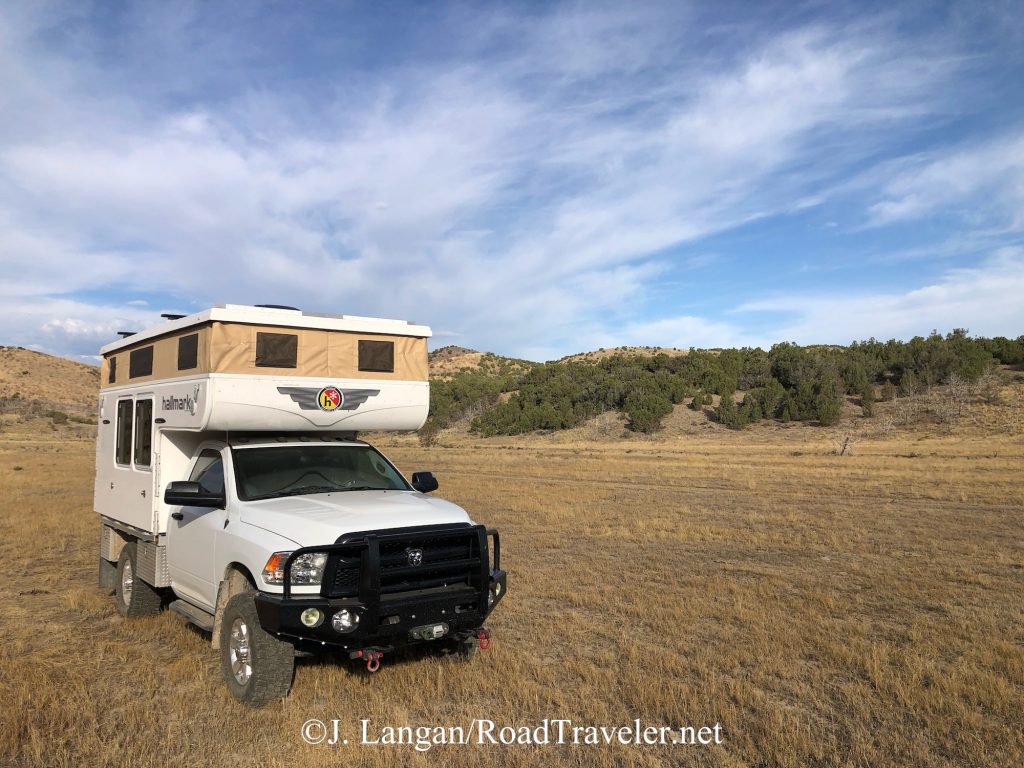
Mickey Thompson Baja Boss A/T LT295/70R18
During the November 2019 SEMA Show, I received insider information from a Mickey Thompson manager about a new Baja Boss A/T they had in-the-works; it was still more than one year from being announced. I’m a fan of the Benjamin Franklin quote “three may keep a secret if two of them are dead,” and I focus on being the one that is alive.
The Baja Boss All-Terrain was introduced to automotive journalists at the virtual 2020 SEMA Show, with a press embargo date of April 5, 2021. As soon as possible I requested a set for evaluation, choosing the LT295/70R18 size. One month later I had them.
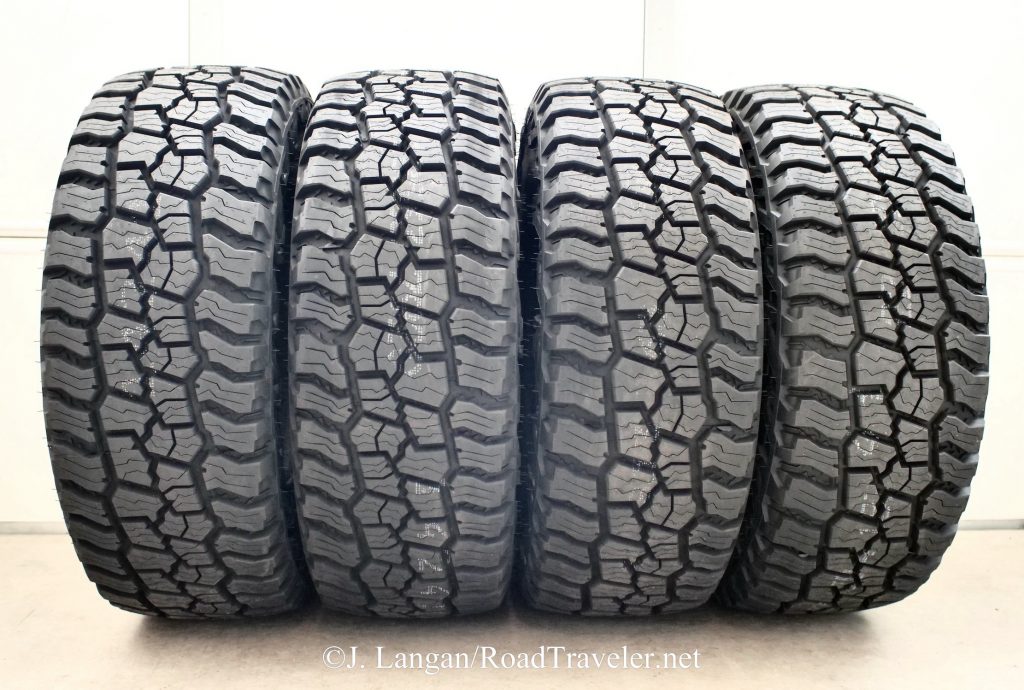
As you can see in my photographs this is a fairly high-void, four-rib tread pattern that Mickey Thompson calls a hybrid, AKA a commercial traction design or an aggressive all-terrain. Tires like these have been my preference for decades, offering more potential grip via siping, self-cleaning abilities, and deeper tread than more conservative all-terrains or all-seasons, while offering a quieter driving experience, and better longevity than mudders.
Continually reducing perceived noise while improving the other attributes of these hybrid designs has been an ongoing challenge for engineers. Historically there’s been no free lunch, because much better sloppy conditions traction requires bigger tread blocks and voids, increasing road noise. Was Mickey Thompson able to achieve the impossible? Read my opinion about this below under the subheading Quiet?
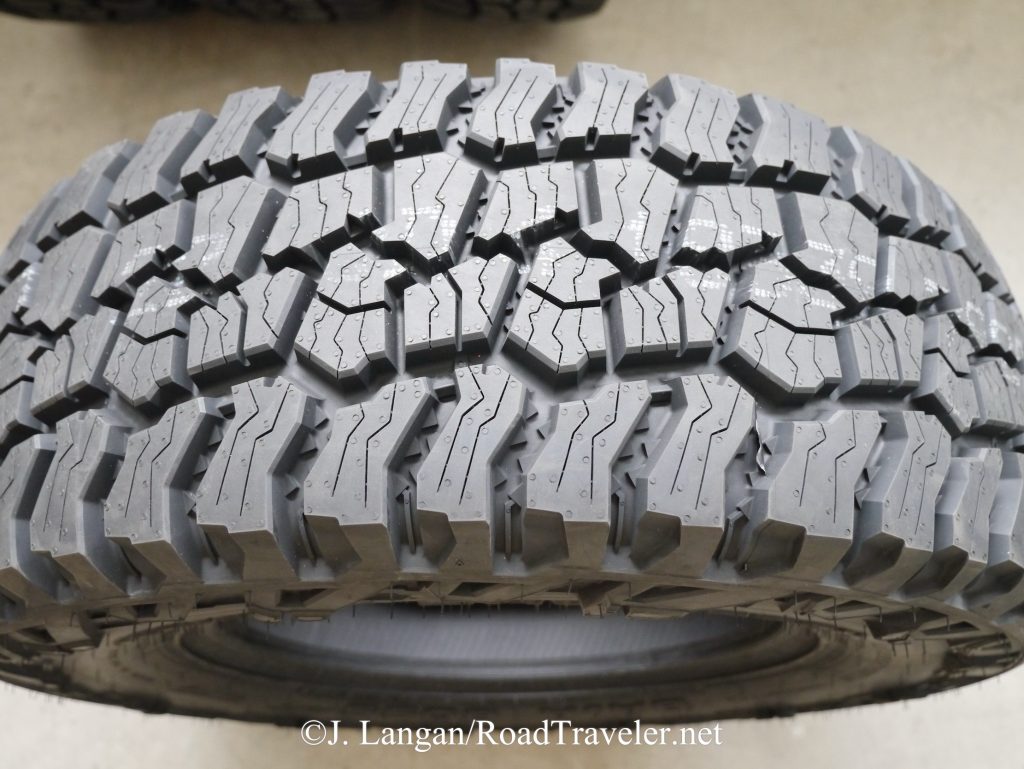
According To Mickey Thompson
Mickey Thompson says the Baja Boss A/T blends Extreme Sidebiters® for a bold look and serious grip with an all-new silica-reinforced compound providing long-wear, all-weather performance and cut/chip resistance.
Design highlights include:
To all of the above I say yup, appears to be true! The substantial siping, which helps achieve the severe winter rating and increase overall grip, measures a whopping 17/32” of the total 18.5/32” tread depth. Calling the shoulder tread Extreme Sidebiters® is not public relations department hyperbole, as they are 14/32” at their deepest!
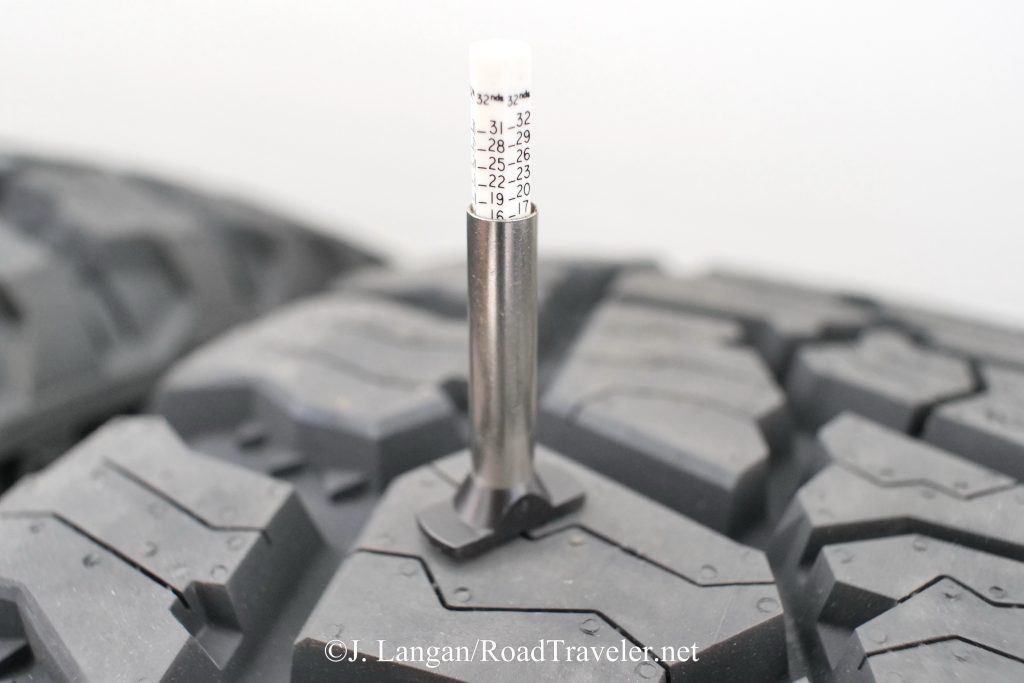
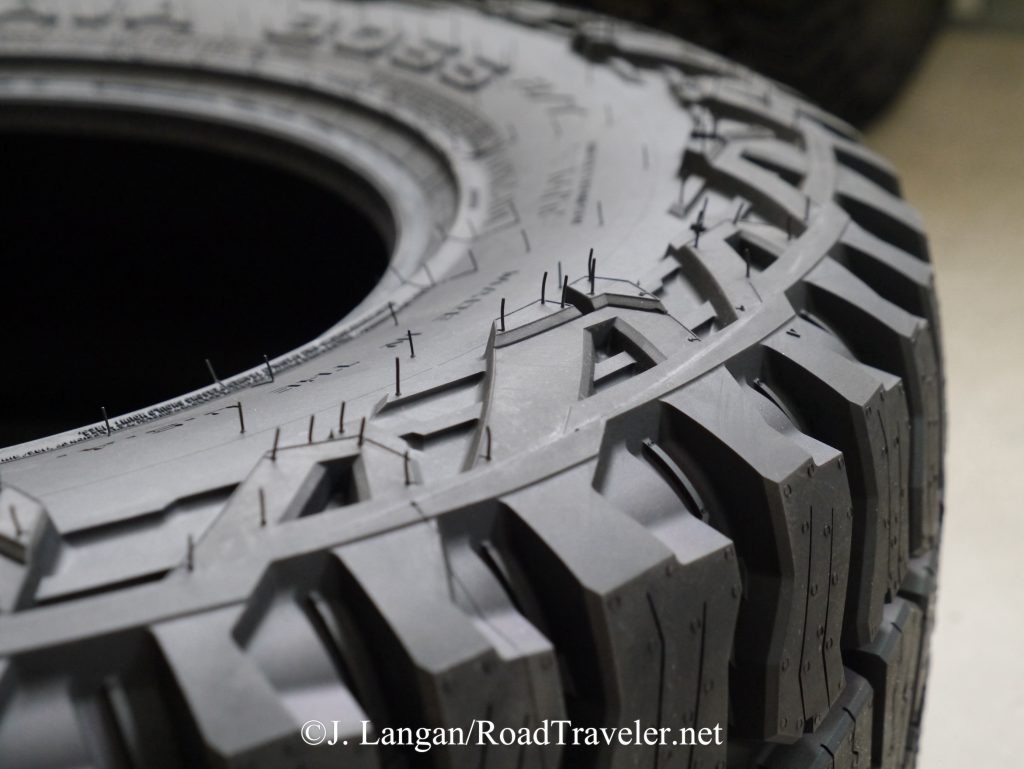
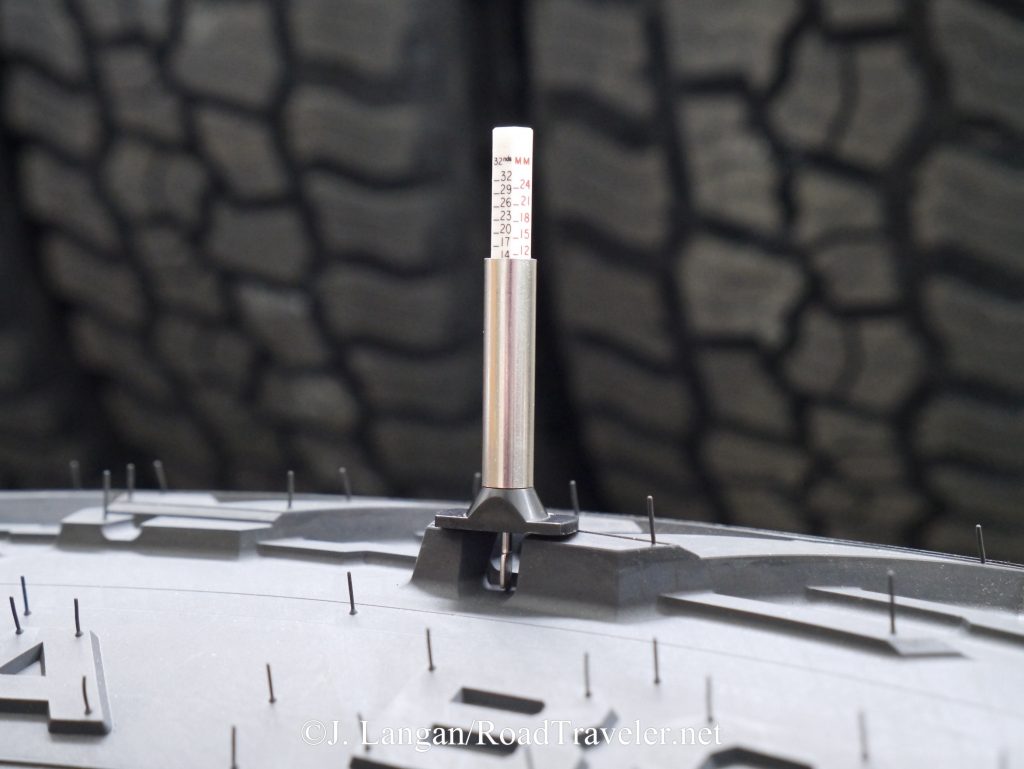
Sizes are offered for wheels from 15-24”. A standout worth noting for the DRW folks or old-schoolers like me that prefer taller, narrower rubber that fits and clears more easily, offering less rolling resistance, potentially better fuel economy, etc., is the LT255/85R17. Also know-as a 35×10.00R17, this load-index 121 size supports 3,195-pounds at 80-psi in SRW applications, and would be great under my everyday crew cab. However, the 129 load-index and 18” wheel of the LT295/70R18 was a better choice for my flatbed Hallmark Camper outfit because the shorter sidewalls are firmer and more stable for maximum loads.
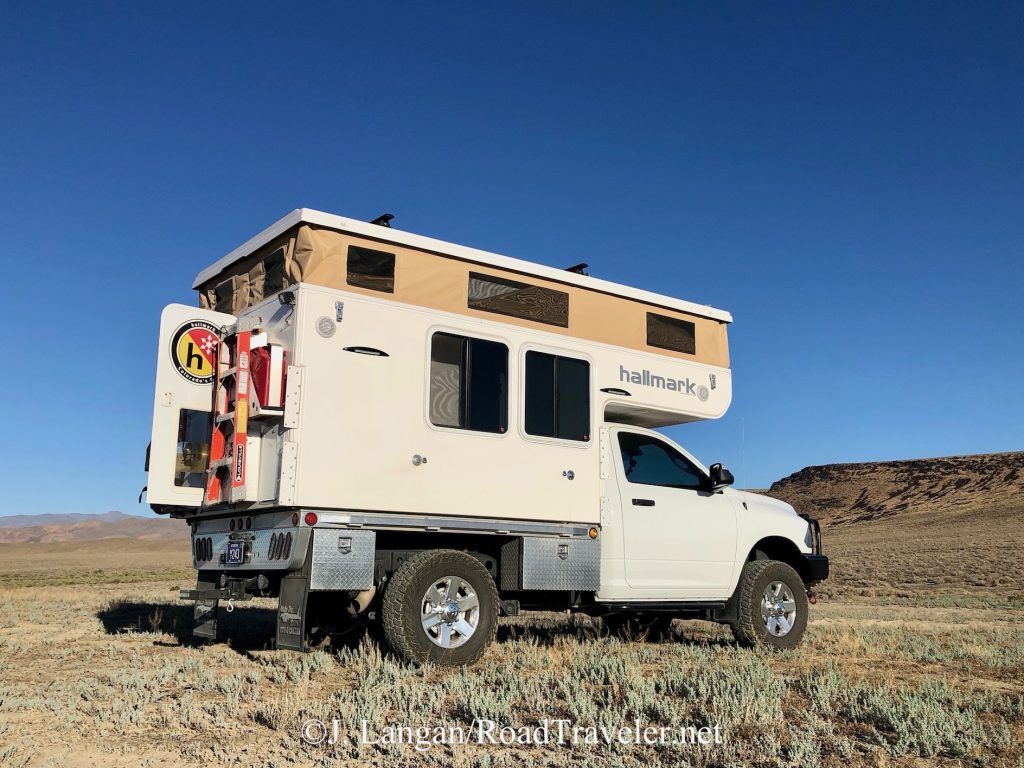
Mount & Balance
Unless a specific tire and wheel combination requires a different solution, my standard practice is to use a single plane, so-called static spin balance, as this method requires less weight and is generally sufficient. Wider tires and wheels, super aggressive treads, or just a carcass with more lateral imbalance may require dynamic balancing, which involves putting weight on both the inside and outside of the wheel.
Many do not realize that it is often the wheel that requires the majority of the weight to balance an assembly, as modern tires are generally fantastically true. An easy way for an enthusiast to see this is by noting where wheel weight has been placed for their current and previous sets of tires. Typically the weight is needed in the same general area, pointing to imperfections in the wheel more than the tires.
According to Mickey Thompson the LT295/70R18 size weighs 67 pounds each, and they were 104-pounds when mounted to an OEM forged aluminum wheel. Maybe you should sit down before you read how little weight was needed to static balance these beautiful meats.
1) 3.0 ounces, right-rear
2) 3.25 ounces, right-front
3) 2.5 ounces, left-rear
4) 3.25 ounces, left-front
Instead of putting the rims with the least weight upfront as is common at most shops, I typically put those with the most weight on the front axle. This helps confirm that they’re truly balanced, and avoids potential surprises after the first rotation. In this instance all the wheels needed just a few ounces. I rarely have tires rebalanced, as Centramatic balancers constantly perform that task. These Bosses have been run up to well above any speed limit on numerous occasions, and they have remained insanely smooth after thousands of miles and a few rotations, living on both of my Ram/Cummins trucks.
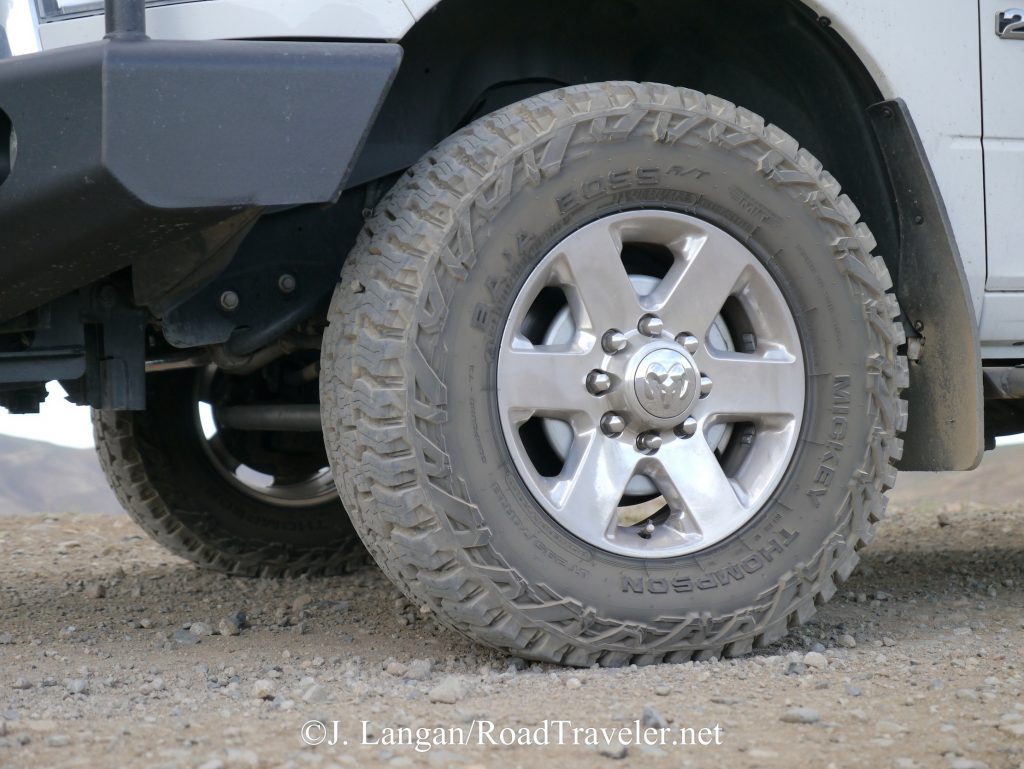
Quiet!
Manufactures have been increasingly successful making beefier treads quieter, yet I routinely find that even aggressive hybrid treads that start out impressively tame get louder with wear, sometimes much louder, even with optimal rotations. (All bets are off if proper maintenance and rotations are not strictly observed.) This has not been the case with the new Baja Boss A/T, the barely audible hum has yet to increase. To my ear they are still one of the quietest, if not the quietest, tire in this category that I’ve experienced. Impressive!

Tough Enough? Extreme Puncture Resistance?
Rugged designs help prevent punctures and stout carcass construction helps tires run cooler and support big loads, translating into better performance under heavy diesel-powered rigs that do more than run around empty. Commercial tradesman applications, farming and ranching, off-pavement adventures, and RV users can all benefit from the Boss A/T’s stout construction. Are these treads as rugged as they claim? After over 14,000 miles of hard use, my answer is a resounding yes!
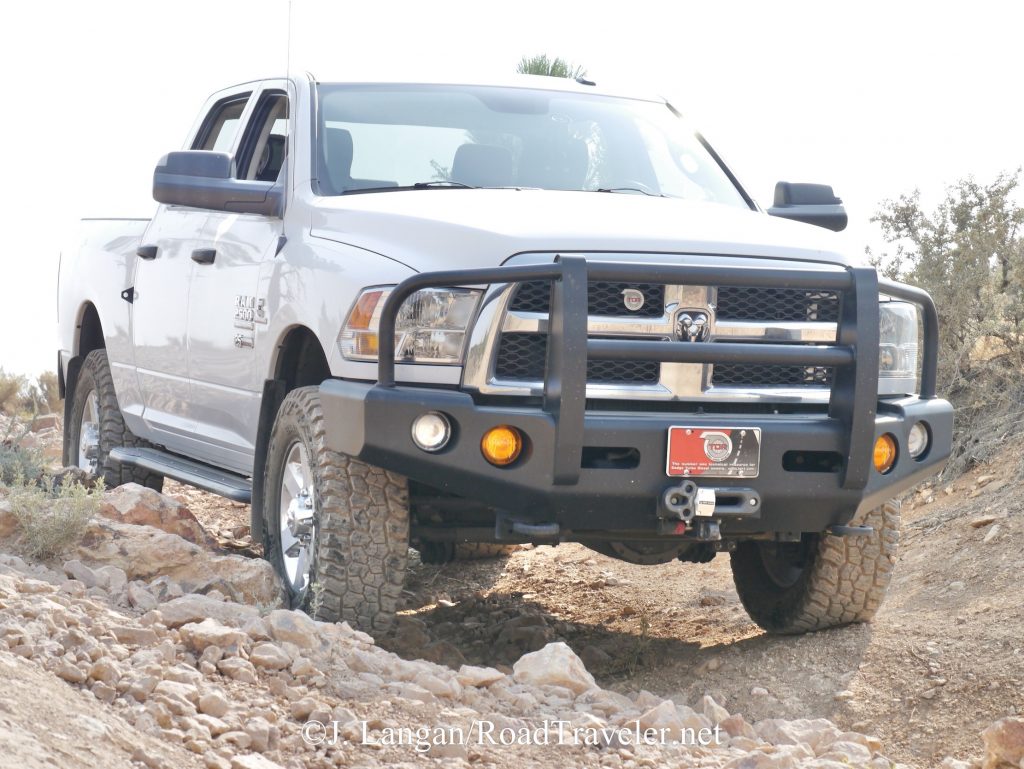
My tire evaluations typically include a photo shoot off-road at low pressures in a nearby National Forest, where I flex and abuse the tread and sidewall on some rocks. It helps gauge ruggedness and flexibility, and makes for some cool photographs. Few other than dedicated a 4WD enthusiast will ever do this, particularly in a big diesel pickup…enter the James-ness!
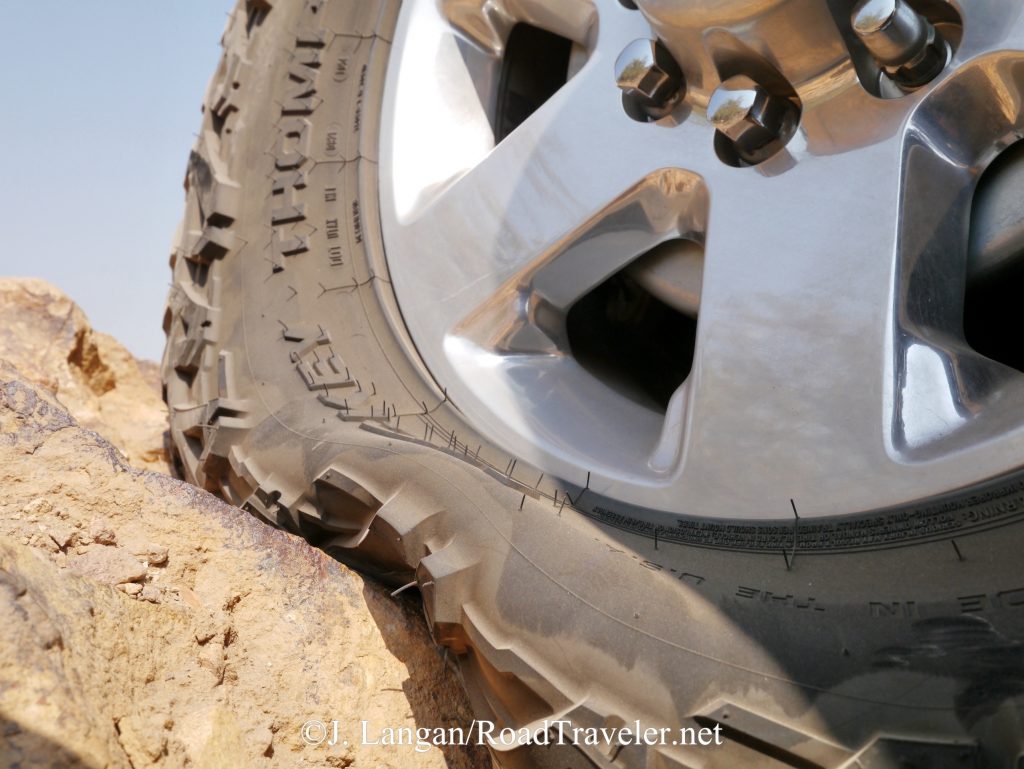
Even rugged tire designs can be punctured, as they are essentially rubber balloons. However, I was thoroughly impressed with the flexibility and ruggedness of the Baja Boss All-Terrain’s when I subjected the tread, shoulder, and sidewalls to folding and pinching rarely seen outside of competitive rock crawling.
After the photo shoot, they were filled with appropriate street pressure, and have continued to perform flawlessly at all speeds and under all conditions. Tire pressure has been dropped many times to improve off-payment traction, ride, and overall performance, and the tires repeatedly work like they should.
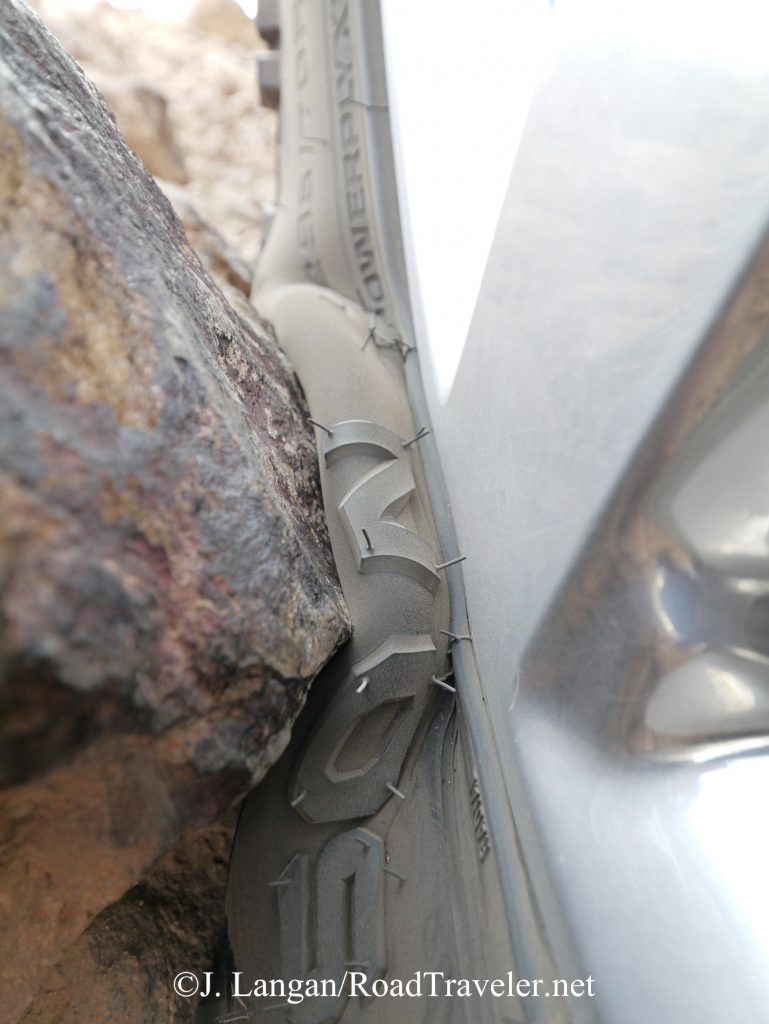

Application Considerations
My 2017 regular cab with Hallmark flatbed camper is a full time RV, so while it’s under a constant, full-load, it accumulates miles much more slowly than a daily driver. One would think that a heavily loaded RV-application Turbo Diesel (hauling and/or pulling) would result in rapid wear, yet that is not necessarily what happens. Chronicling treadlife on many sets of tires on my diesel pickups, and those of friends and acquaintances has provided valuable perspective.
Vehicles that see daily driving are typically subjected to repeated hard accelerations, which loads the drive tires, as well as hard stops and turning, which is harder on the fronts. These realities often contribute to reduced life compared to vehicles that see more steady, long-distance travel.
Occasional aggressive use of the skinny pedal is part of my driving style, although I am extremely soft on the brake pedal and travel slowly through most tight turns. I often obtain superior longevity and slower wear on my daily driver crew cab compared to my friends. Drivers matter.
Longevity
The Boss All-Terrains were initially mounted on my 2014 crew cab to log miles more quickly. As shared in previous columns, I am highly critical of the brief tire reviews in most magazines that say… the tires performed well, we really like them, blah blah; which is typically the result of nothing more than a few hundred miles of use, not thousands. Occasionally there’s an update later after more miles. Thousands of miles of saddle time and evaluation should be the baseline norm, not the exception.
The Boss A/Ts arrived at the perfect time, as I had started working away from home; the 2014 crew cab started seeing daily commuting miles, which included a run home during my lunch break for dog care. I’m often pressed for time, and there’s much firm use of the skinny pedal at the hands of the BD Throttle Sensitivity Booster (still LOVE it!). Due to these lifestyle changes the Boss A/Ts received harder use than any others treads in many years.
Under torque-monster diesel pickups I have repeatedly observed that approximately 1/32” of tread per 2,000 miles is good or average for an aftermarket set of rubber, and substantially more miles, 2,500 or so, is above average. For comparison, a few sets of OE Firestones I’ve measured have melted though 1/32” in a mere 1,500 miles, 25% less than my 2,000 mile baseline!
After the initial mounting and the first rotation on the 2014 crew cab, I had accumulated 6,500 miles on the Baja Boss A/Ts. Three measured 15.5/32”, and one was 15/32”, which was 2,080 mi. per 1/32” of tread depth. Considering the repeated, aggressive accelerations and fast driving this was above average; it would be just average with less spirited driving.
The Mickey Thompsons were pulled from the crew cab and slapped onto the 2017 Ram flatbed Hallmark camper rig, where they logged another 4,500 (s)miles before their third rotation. The rears were down to 13/32”, with the front wearing little and still showing 15/32. (This is part of why we must rotate.) As the tread becomes shallower the overall accuracy of measurements increases, and it’s not uncommon for the rate-of-wear to slow after these more accurate measurements. With another 3,500 miles under the Hallmark Camper, 14,500 miles total, all were showing 13/32”. The Baja Boss A/T treads had achieved 2,600 miles per 1/32”, which is well into the above average column for many diesel pickups.
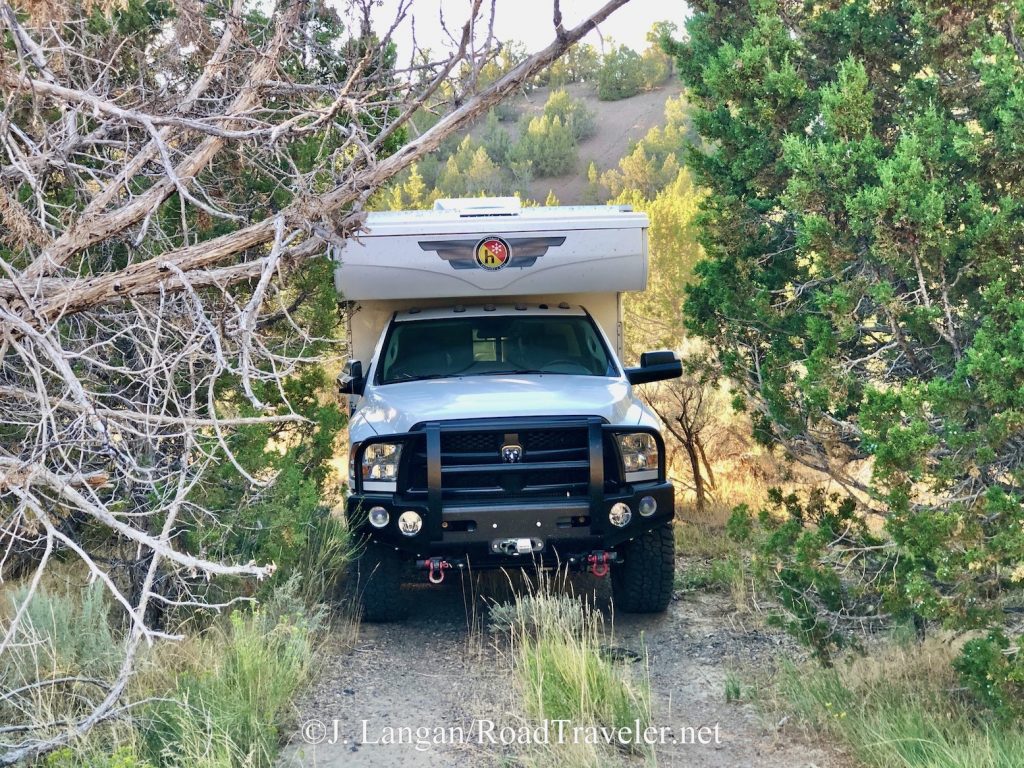
Traction Everywhere
Traction and handling has been impressive in all conditions and on all surfaces, which included much dirt, gravel, rock, some sand, rain, but unfortunately very little snow. It would’ve been nice to evaluate the severe winter rating more thoroughly. However, the western states multiyear drought has severely reduced precipitation in Northern Nevada and Northern California.
It’s difficult to chronicle the exact number of off-pavement miles these Bosses have seen, but a conservative estimated is 1,500 (10% is huge for non-commercial applications). Opinions regarding traction are mostly subjective, variable, and relative to the platform and driver. Nevertheless, for those wanting a hybrid tire I don’t envision people wanting more grip than the Baja Boss A/T can provide. Should the opportunity present itself I’d gladly run another set of the Baja Boss, as they’ve earned a spot on my short list of favorites.
Tell ‘em you saw it on RoadTraveler.net!
Copyright J. Langan/RoadTraveler. All Rights Reserved
James Langan
Resource:
Mickey Thompson Tires: mickeythompsontires.com
draft
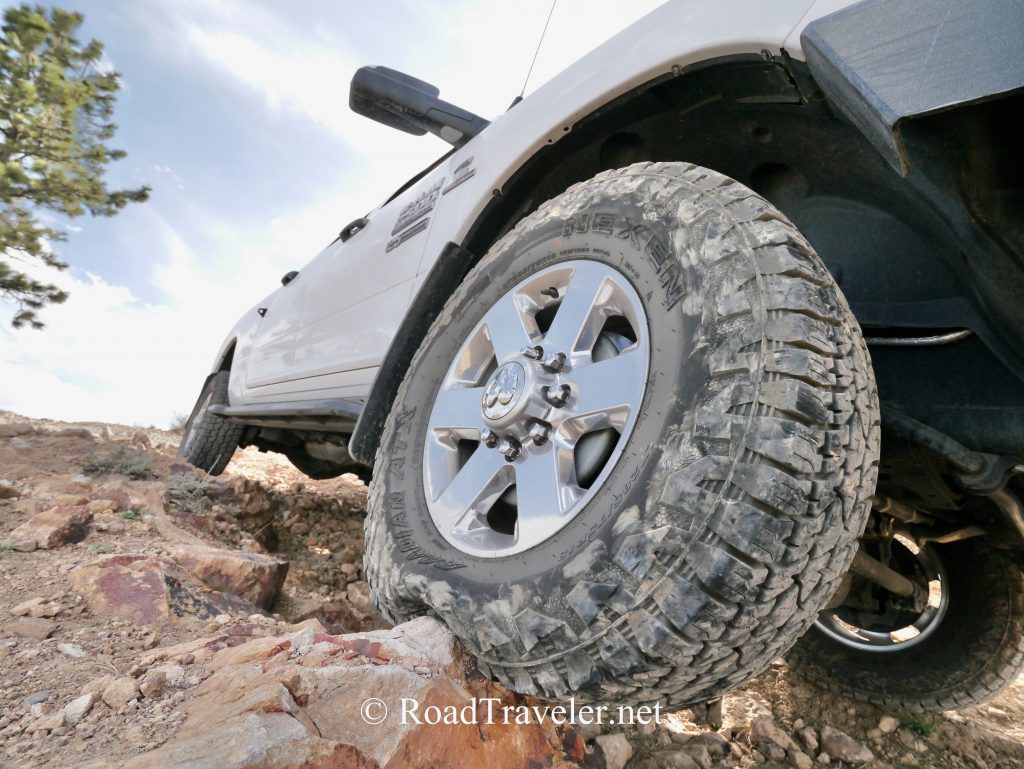
Although I have favorite tire treads and brands, I am always interested in trying something new or different. Nexen’s Roadian ATX all-terrain is a new 5-rib tread designed specifically for light- and heavy-duty pickups and full-size SUV wagons, and available in a whopping 63 sizes. Lugs on the upper sidewall/shoulder offer both traction and protection from damage, while adding a tough and aggressive look. The shoulder lugs are the same on both sides, but one side adds a cobblestone pattern between the lugs and inside the raised black letters.

All LT-sizes have 16/32” of tread depth, most have 3-ply sidewalls, as well as being 3-Peak Mountain Snowflake (3PMSF) severe winter rated, with the exception of the larger flotation offerings. Light-truck sizes have a substantial 60,000 miles tread warranty.
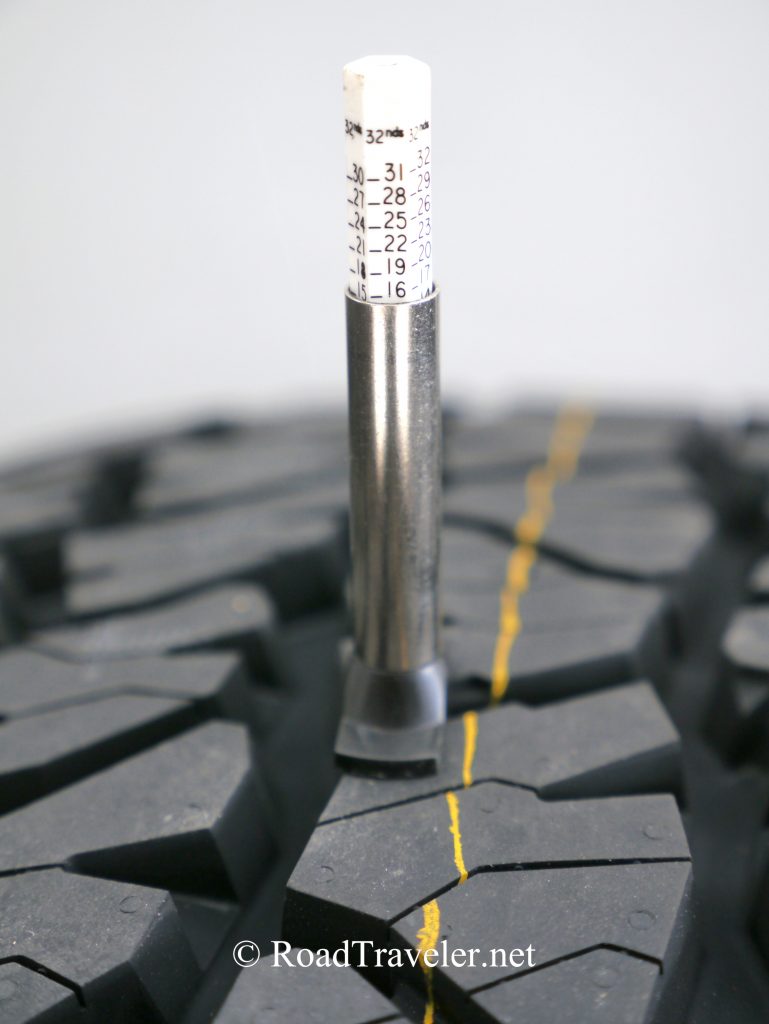
At the 2022 Overland Expo West show in Flagstaff, Arizona, a handful of journalists were treated to a sneak peek briefing introducing the new ATX, as well as the new HTX2 highway-terrain design. The HTX2 is also 3PMSF certified, which is downright impressive! The introductory press release information was embargoed until June, and in July Nexen sent a set for a longterm evaluation in a favorite size, LT285/75R18E.
3-Ply Construction
Nexen boasts the ATX has an industry-best (for an all-terrain) reinforced 3-ply sidewall, longer tread life, and increased durability to perform well under heavier loads and at higher pressures. The increased rigidity is designed to enhance cornering stability and load support. The sidewall construction increases puncture resistance both on- and off-pavement, and the aggressively angled shoulder lugs improve durability.
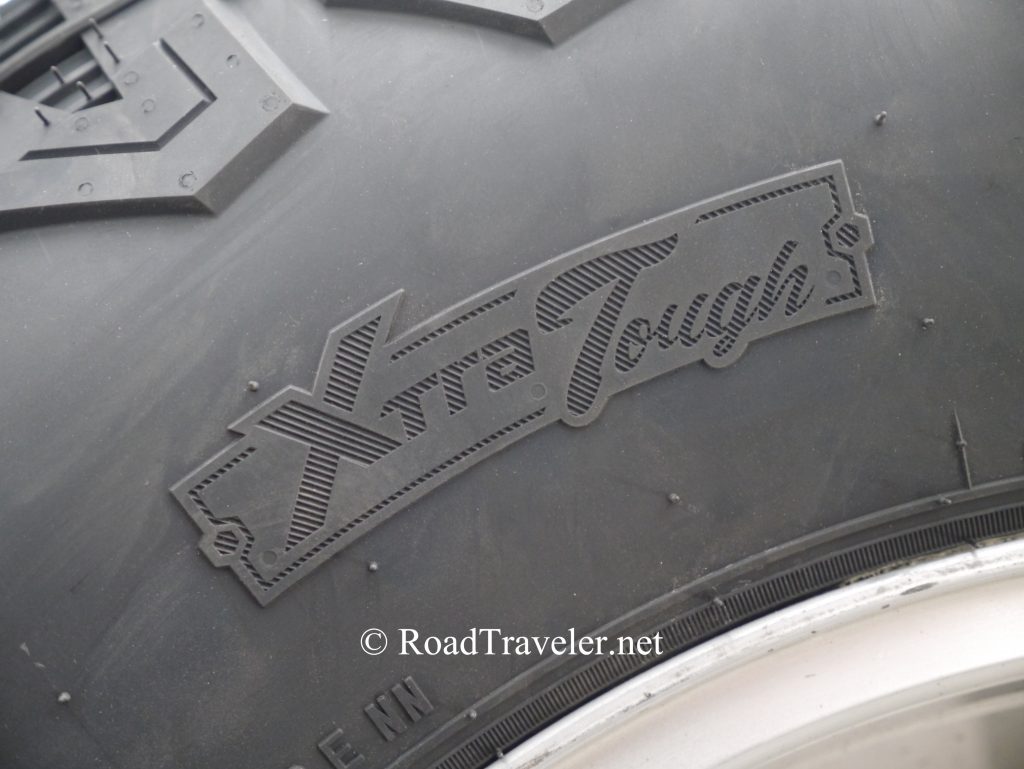
Siping
All-terrains and all-seasons invariably have more siping than most higher-void designs, and the ATX is no exception with two or three sipes in every tread block. Nexen’s sipe technology is designed to increase tread-to-road contact, and overall handling characteristics as they wear. Of course the siping helps it earn the 3PMSF severe winter certification.
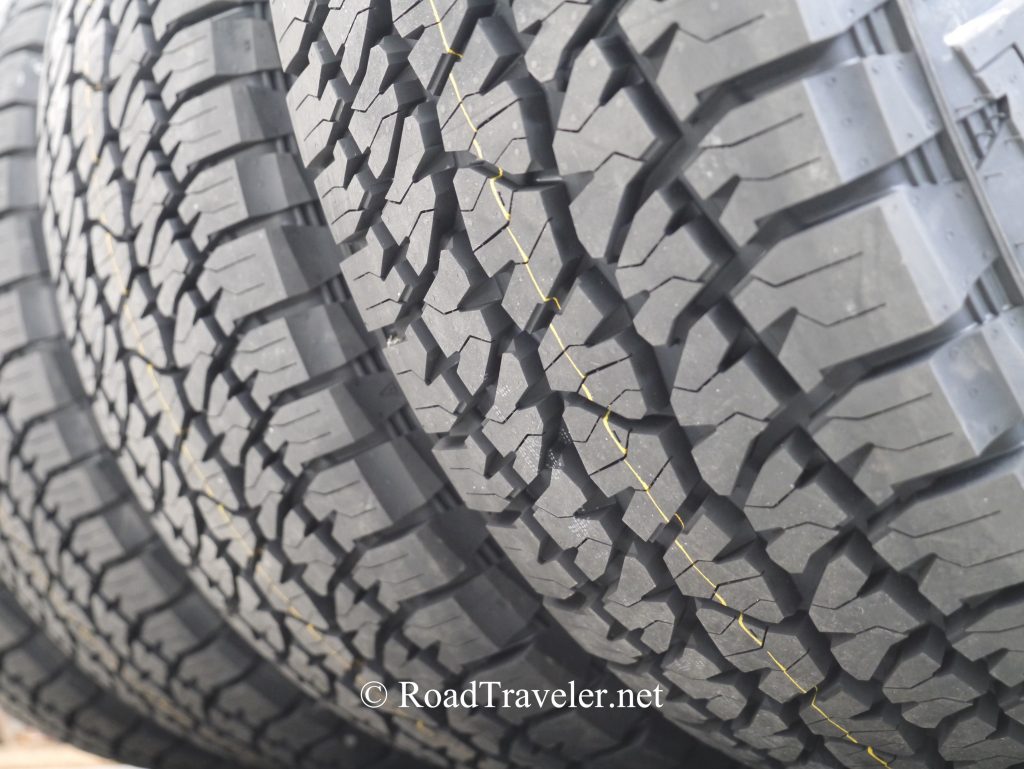
Mount And Balance Take One
The 67-pound LT285/75R18 ATX with a load index of 129 (4,080-lb capacity each at 80 psi) were mounted and balanced on forged-aluminum OEM Ram 18-inch wheels at my local Discount Tire. They used my preferred single-plane, static balancing method, which puts less weight on the wheels. An average of only two ounces was needed to balance the set. However, zeroing on a balancing machine is not always the whole story.
With the ATX on my 2014 crew cab for my initial test drive, even with the additional help from Centramatic Wheel Balancers, there was some roughness that I thought was a possible balance issue. Discount Tire rebalanced them using the dual-plane dynamic method, which did not add substantially more wheel weight, and lowered the perceived imbalance.
First Rotation Issue
After 2,500 miles I performed the initial reward-cross rotation, but the ATX from the rear axle were not happy up front, with shakes and vibrations that increased with speed.
To help diagnose the problem the suspect tires were returned to the rear axle. After placing the AAM 11.5 on jack-stands and taking all appropriate safety precautions, I let the drivetrain turn the ATX at low-idle as if on a spin balancer. The offending wiggling and hopping was obvious, shared with my contact at Nexen, and they immediately sent a replacement set.
The positive response from Nexen was refreshing. No product is perfect and there are occasionally defective or blemished examples that sneak through (I’ve even had a bad tire from highly-respected Toyo), and because of the professional relationship I contacted the manufacturer directly.
Are Your Wheels The Problem?
It should be noted that the wheels are often the source of balancing issues. In many cases it is the wheels, not the tires, that need most of the weight for the assembly to be balanced. Modern rubber from top manufacturers, even larger light-truck mud-terrains, are quite round and true, usually requiring little weight to roll smoothly. Just a few short decades ago light-truck radials were not nearly as good or capable, and had difficulty handling the loads and power of heavy-duty diesel pickups.
Wheels have also become larger, so even though most are aluminum they can be much heavier than older, smaller diameter rims. These forged aluminum OEM 18-inch Ram wheels weigh 30-pounds each, where the equivalent 20-inch Ram wheels weigh 40 pounds. In contrast, the forged-aluminum Alcoa-made sixteens on my 1996 F-350 weighed only 16 pounds.
Confident that my eighteens were not the issue, having continually used them for several sets of tires, I had an extra set available if necessary for further diagnosis.
Mount And Balance Take Two
Discount Tire mounted the replacement set of LT285/75R18 Nexen ATX, and again I requested a static, single-plane balance, plus I asked them to record the road force as measured by the machine during the process (Road force is summarized below.)
As the included chart shows, this set needed little weight to balance, none in the case of tire/wheel combination #2, and the road force measurements were also low. Tire #1 had the most road force at 29, but a typical maximum allowable road force for a P-rated (passenger car) tire is 35, and much higher for a big LT tire.
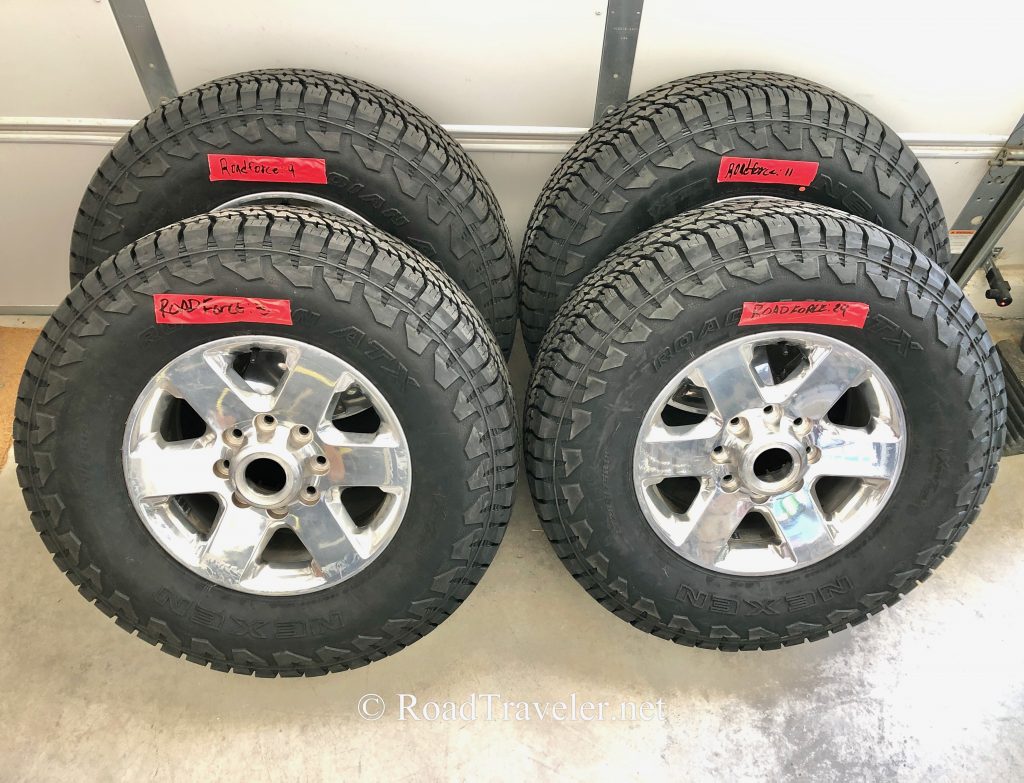
| Tire | Weight oz. | Road Force | Location |
| #1 | 1.25 | 29 | Left-rear |
| #2 | 0 | 11 | Right-rear |
| #3 | 4.75 | 9 | Left-front |
| #4 | 1.75 | 3 | Right-front |
Road Force
Road force, or radial force variation, is a tire and wheel condition that can affect steering, traction, braking and load support. High road force will impart ride disturbances to the chassis and ultimately the driver.
Many modern balancing machines automatically measure the road force as part of the balancing process. A road force load roller simulates the force of the road on the tire and wheel package, and measuring this force provides data on the uniformity of the combined tire and wheel assembly.
Tires may have an area that is stiffer than the rest, which is called force variation. The combination of imperfect run-out and force variation can lead to bad vibrations. Some inconsistencies in stiffness, weight, and balance are unavoidable, but this additional metric can be quite helpful diagnosing problems or defects.
Recently I had a set of LT295/65R20 Cooper STT PRO mudders swapped onto a different set of OEM 20-inch wheels, and noticed that the weight placement was odd on one rim. During my requested rebalance, the problem was obvious for anyone paying attention; the road force was 113! Rotating the tire 180° on the wheel corrected the issue, resulting in a road force measurement of only 29.
Where The Rubber Meets The Road
Conventional wisdom includes putting the best tire and wheel combination (least wheel weight and/or road force) on the front axle, often the left-front position, to avoid poor drivability, handling, or driver complaints. But I am not an employee at a tire shop, I put the mounted rubber onto the axle studs myself in my shop, and am often interested in the rawest, most revealing data possible for my reviews.
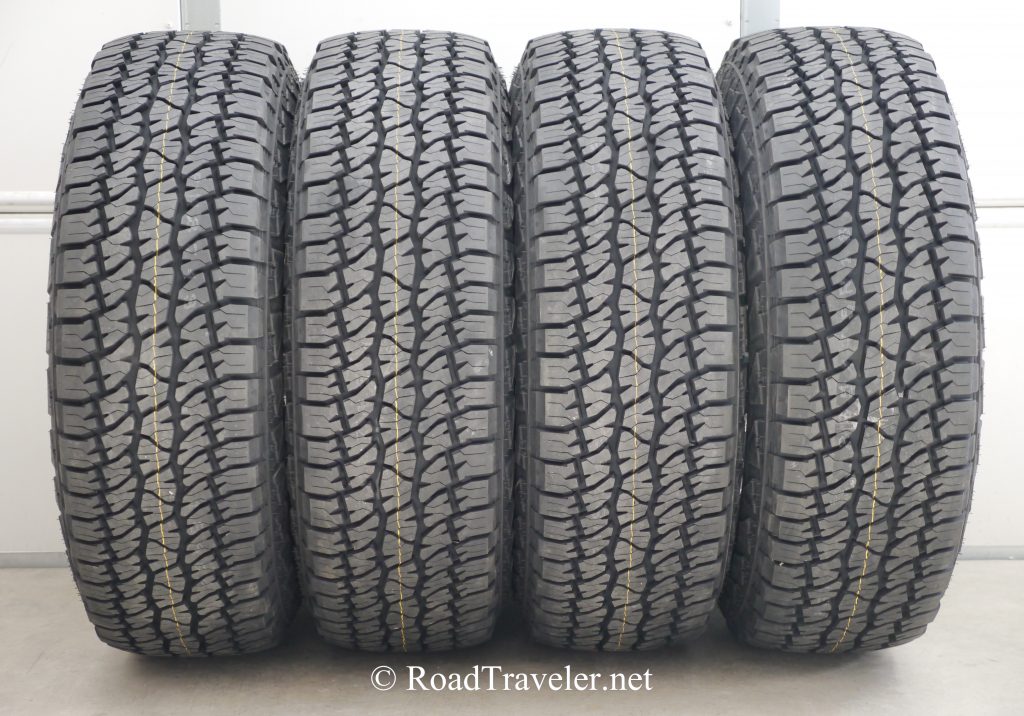
So I will frequently put what is likely the least true assembly on the front. This helps me confirm that they are truly balanced, and will roll smoothly at all speeds, even after a rotation. These Nexen ATX felt fantastically smooth and true, with no bad manners or vibrations up to 100 mph!
After an initial 50-mile high-speed freeway flogging, I returned my garage and immediately did an X-pattern rotation to get every tire on both the front and rear axles, and both left and right sides of the truck. Another high-speed freeway road test followed, and the Roadian ATX continued to run flawlessly.
Overall Subjective Observations, Comments & Critiques
Traction
Winter 2022–2023 ended the years-long drought cycle in Northern Nevada and nearby Northern California, producing both abnormal amounts of rain and countless days with several inches of snow. This provided many opportunities to use the Nexen ATX during on-highway 4WD conditions, in both shallow and inches-deep snow, a little ice, and pooling heavy rain that made it wise to use four-wheel-drive.
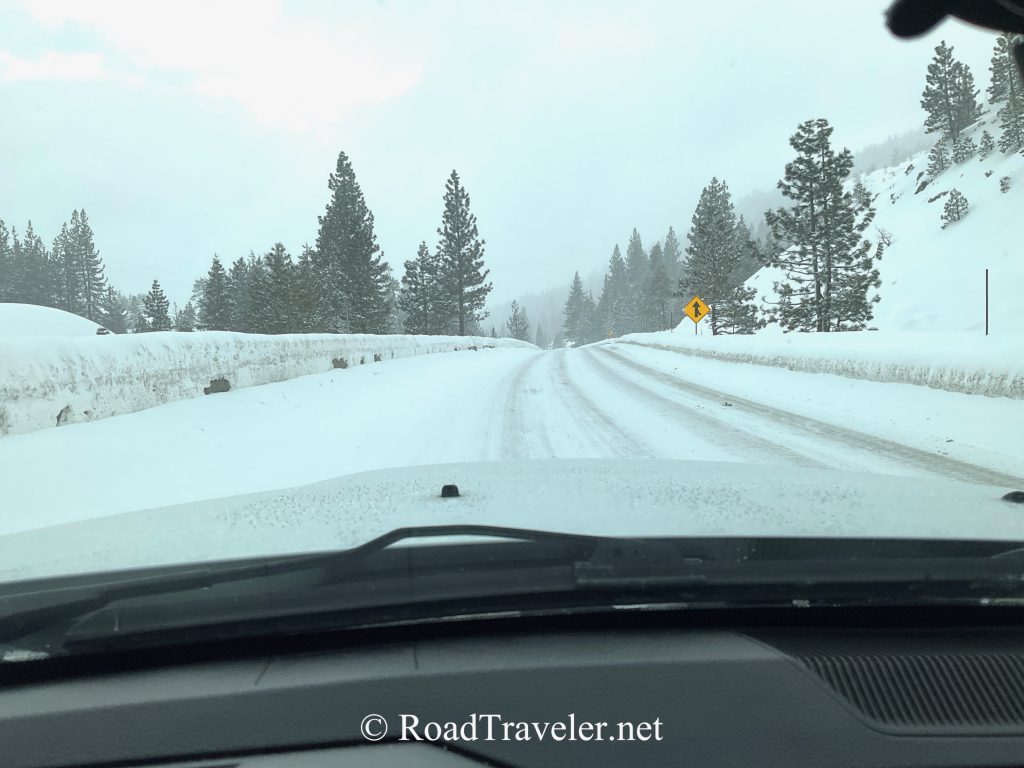
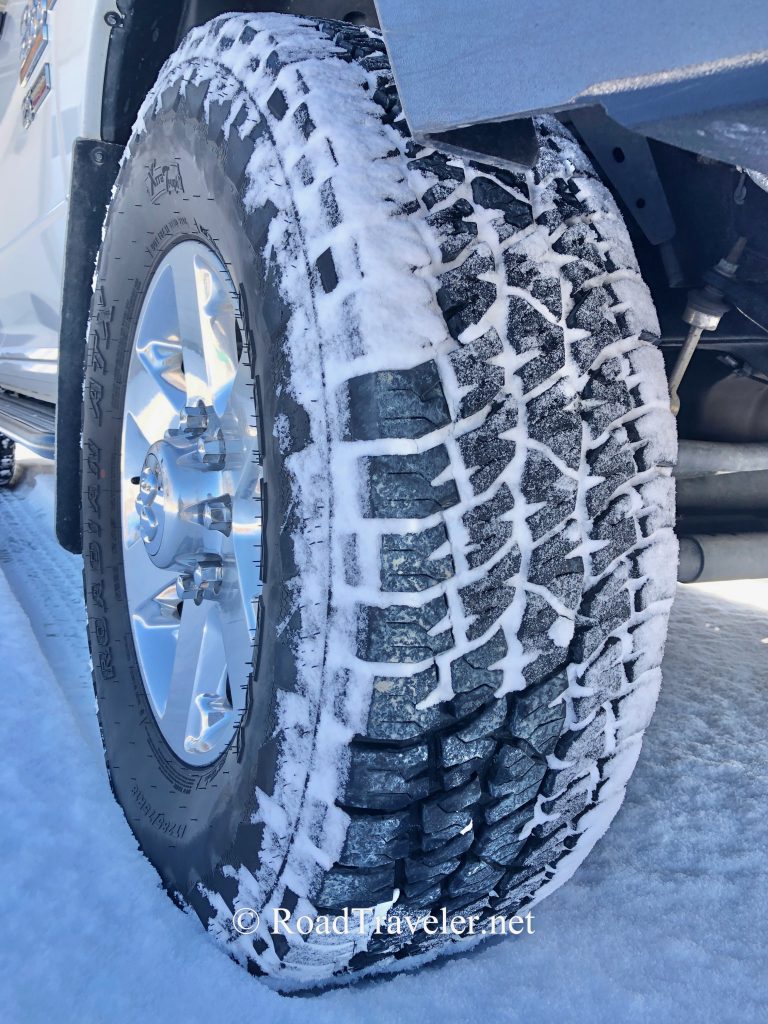
Routine off-pavement driving is a part of my lifestyle, so these ATX have seen hundreds of miles of high- and low-range four-wheel-drive use, usually with the pressures lowered specifically for that purpose (30 psi in front and 20 psi in the rear). Flex, deformation, ride, and traction has been great. Cutting or chipping of the tread appears virtually nonexistent.
Clearly these are not mud-terrains, however, they have seen shallow mud and squishy terrain several times, and have performed as well or better than any 5-rib A/T I’ve run in similar conditions.

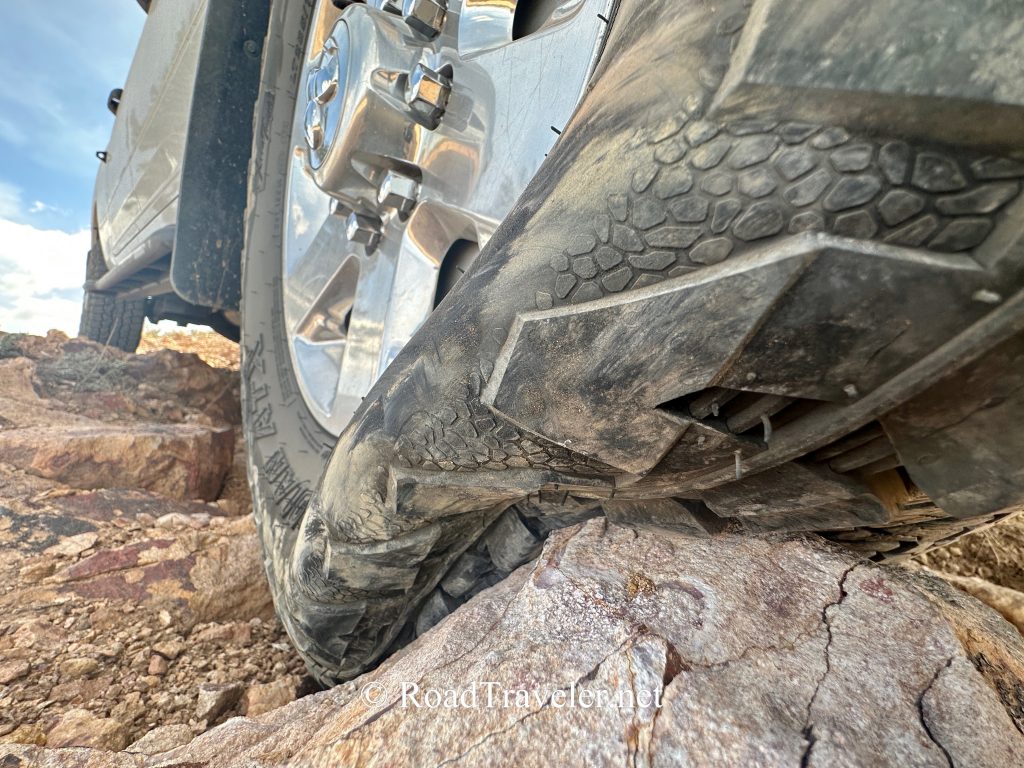
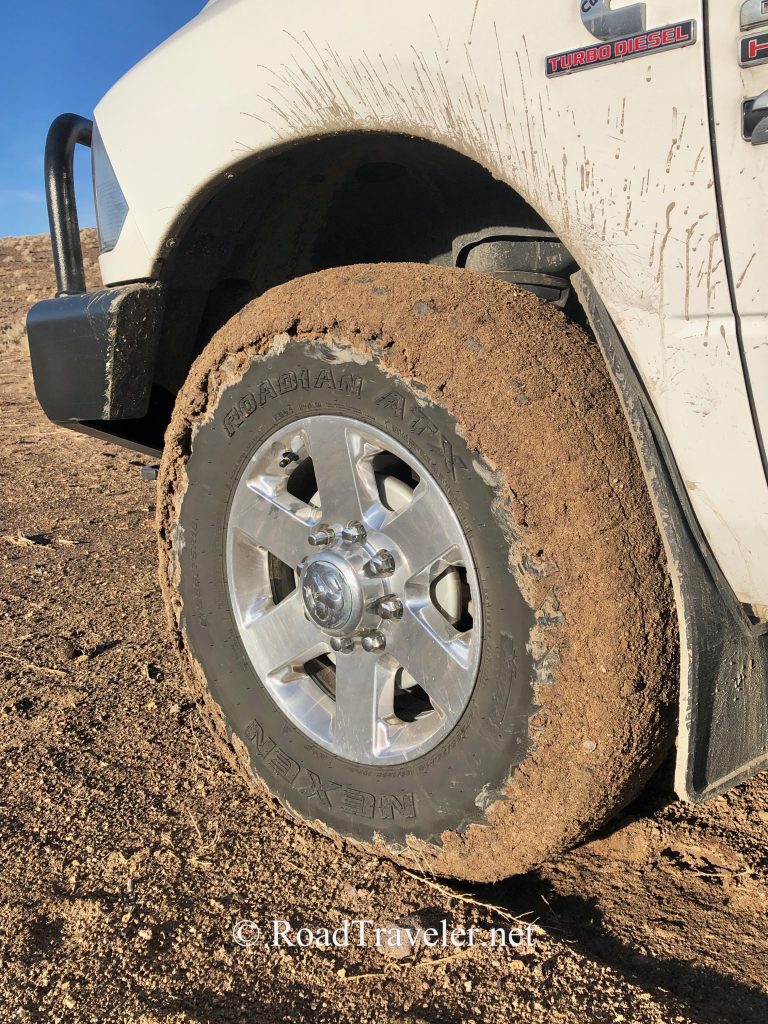
Noise And Ride Quality
Perception of noise is extremely subjective, has much to do with the specific vehicle and road conditions, as well as one’s tolerance and personal experience baseline. If someone only runs a highway-terrain tread, then anything with more void is going to seem loud. Conversely, those that run a mud-terrain or a hybrid/commercial traction design, will think lower-void tires are nearly silent. With a preference for medium-void commercial traction treads, I find the ATX impressively quiet, but not only because I’m accustomed to louder rubber. When comparing the ATX to my memories of testing the similar 5-rib Cooper AT3 and later AT3 XLT just a few years ago (TDR108), the ATX seem nearly silent.
Again comparing the ATX to the Cooper AT3 XLT, the Nexen’s 3-ply sidewalls appear to provide a firmer, more supportive and responsive driving experience compared to the 2-ply Coopers. This is a positive for heavy-duty applications because softer tires will not support big loads as well and can flex too much, generating excess heat, which is the nemesis of all tires. Balance and tracking have remained excellent, but treads can exhibit different characteristics on different chassis, and your alignment settings matter too.
It is critical to remember that regardless of the tire you choose, it is beneficial to run appropriate pressures and avoid unnecessary over (or under) inflation for the best overall performance. An extreme example is running 80 psi on the rear axle of a pickup with zero load in the bed. Sadly, unless you’ve updated/reprogrammed your truck’s computer, Ram has made running appropriate psi problematic on the 2500 series. A cautionary yellow TPMS light will illuminate when running less than the 80 psi on the rear axle, or 60 psi up front. This is simply ridiculous, but I understand folks not wanting to run around with a glowing light on the dash. My trucks have been modified with lowered pressure thresholds to match my uses, and I use appropriate inflation for the load.
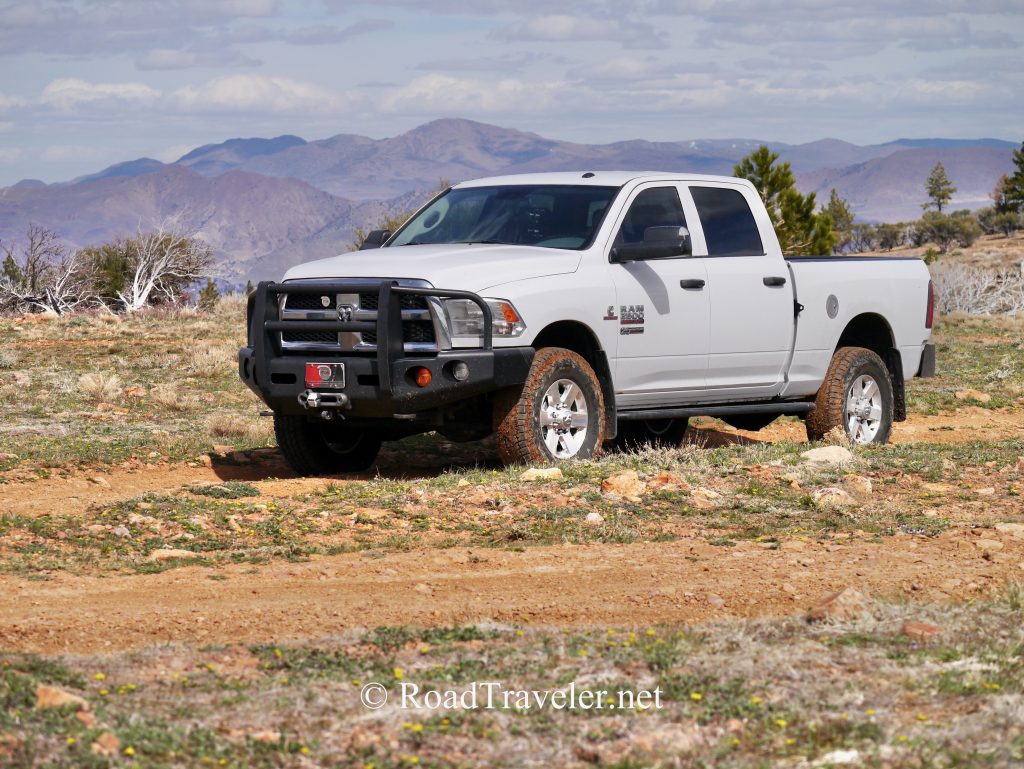
Baselines
Longevity and wear is impacted by several variables, including: the vehicle on which the rubber is mounted, road conditions, loading (which includes one’s acceleration, braking, and turning habits), temperature, inflation pressures, and the driver. During my freelance journalism career I have tracked the wear of dozens of tires, chiefly but not exclusively on heavy-duty, 4WD diesel pickups with manual transmissions.
With a manual, every upshift results in a loss of boost and rpm which must be regained before reaching for the next higher gear. This cycle involves the repeated loading of the drivetrain with low-rpm torque which is different than an automatic transmission. Autos will keep the boost and rpm higher when one is accelerating briskly, more horsepower and less low-rpm torque, and these differences should be obvious in the seat-of-the-pants of experienced and attentive enthusiasts. So if all things are equal, which they rarely are, I argue that a manual transmission can wear tires more quickly than an auto.
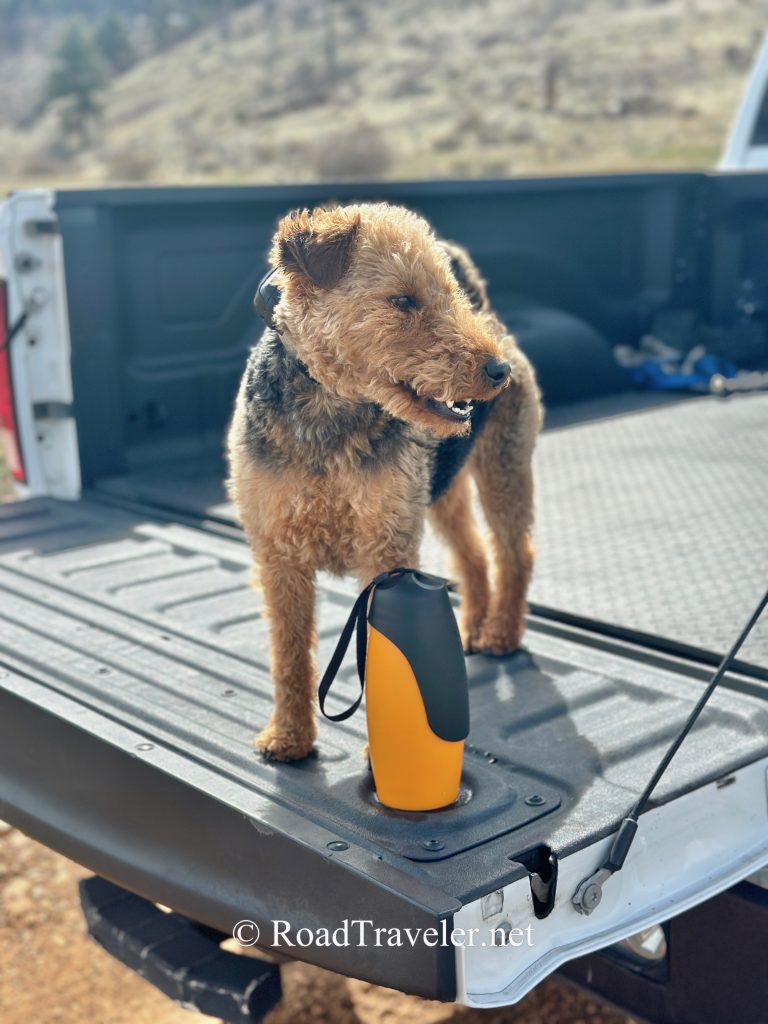
Wear Data
After 9,600 miles and two rotations, the Nexen Roadian ATX are 4.5/32” shallower than their original 16/32”, which is 2,133 miles per 1/32” of tread depth. This is good and comparable to quality aftermarket rubber from several manufacturers. Considering the test platform, duty-cycle, and other variables, my opinion is that substantially under 2,000 miles per 1/32” is substandard, and over 2,000 miles is good.
It’s noteworthy that there has not been a substantial rate-of-wear disparity on the front and rear axles. The torque-loading of the drive axle, especially under a diesel, often results in more rapid drive-tire wear. This is not just a truck thing, as I have documented this on two personally-owned manual transmission Volkswagen TDI (diesel) front-wheel-drive cars. Both TDIs wore the fronts much more quickly than the rears due to the low-end torque. Designs that do not show substantially more drive-tire wear between rotations often indicates the potential for superior longevity.
Really Like ‘Em
While I was skeptical about the Nexen brand before trying the ATX, sometimes it’s good to step out of one’s comfort zone. Even with my bias for medium-void rubber, I have been impressed with the Roadian ATX. Hopefully they make a hybrid/commercial traction design soon, which would fill a gap in their current lineup. I’d be chomping at the bit to try them.
James Langan
Instagram: @RoadTraveler
YouTube: RoadTravelerNet
Resource:
Nexen Tire: nexentireusa.com
Tell ‘em you saw it on RoadTraveler.net!
©️ James Langan/RoadTraveler. All Rights Reserved
Instagram @RoadTraveler
Resources:
Tell ‘em you saw it on RoadTraveler.net!
James Langan
Instagram @RoadTraveler
Resources:

Nexen, a Korean tire company, hosted a media briefing at Overland Expo West. They gave journalists a sneak peak at their new Roadian ATX all-terrain (official launch was not until June 1, 2022). This tire has a 3-ply sidewall, 60,000 mile treadwear warranty for LT sizes, and the 3-peak mountain snowflake/severe winter rating (except flotation sizes).
While I have noticed Nexen at the SEMA Show I had never investigated the brand or their offerings. My general preference is for higher-void, all-terrain or commercial traction designs, however I’m not against running a lower-void, 5-rib all-terrain or all-season, particularly one that has a robust sidewall deign and is 3-peak/mountain snowflake rated. (Nexen also makes a couple good looking, knobby mud-terrain treads.)
There are 63 sizes, including one of my current favorites, the LT285/75R18. Timing matters, and currently I have an extra set of 18″ OEM aluminum wheels sitting in my shop, and an opening in my editorial schedule. If Nexen will supply a set for evaluation, I’ll start a long-term review.
Tell ‘em you read it on RoadTraveler.net!
James Langan
Instagram/TruthSocial @RoadTraveler
Resources: